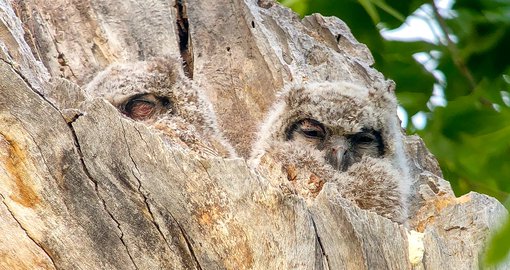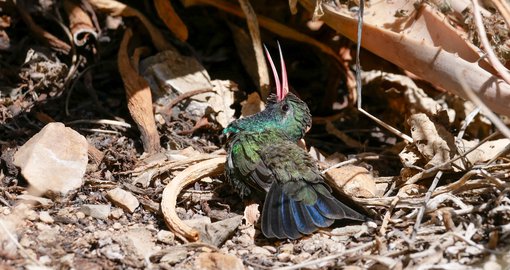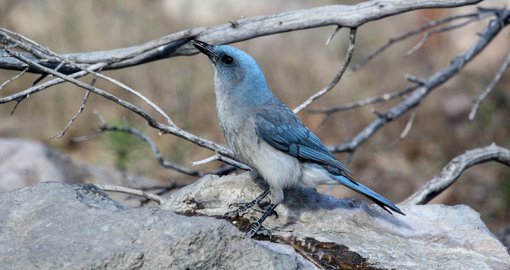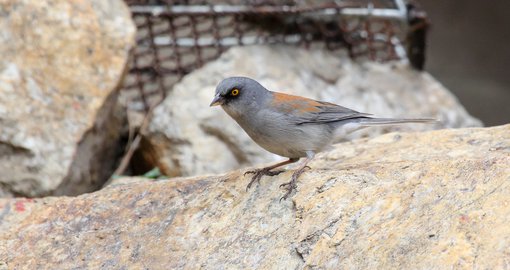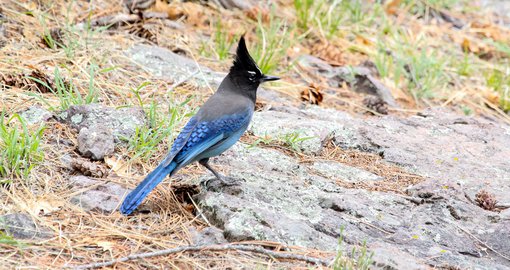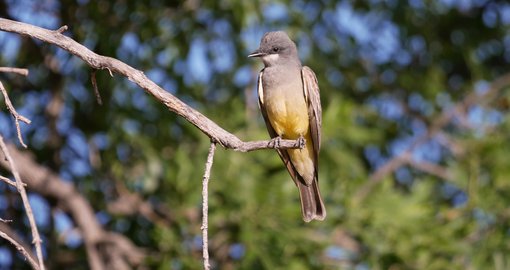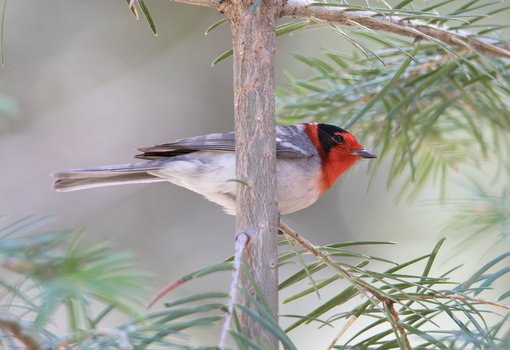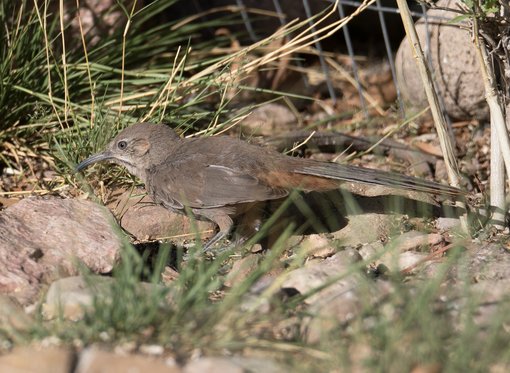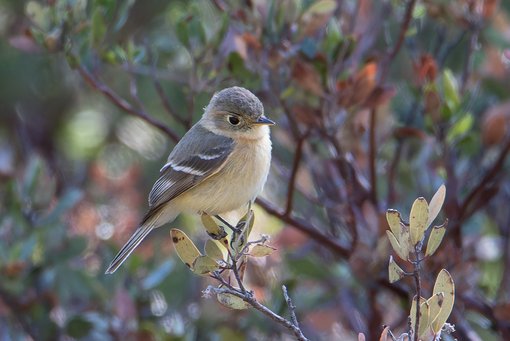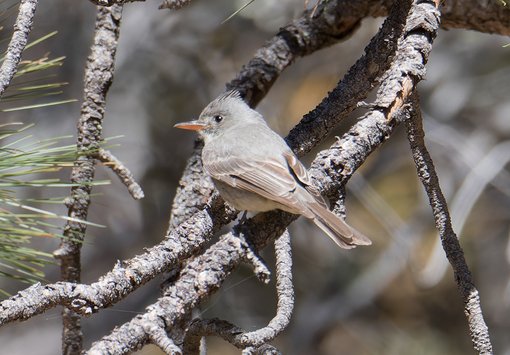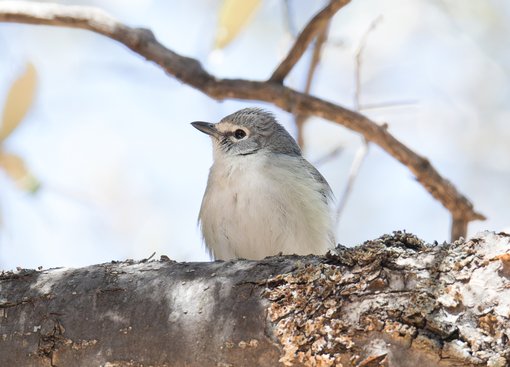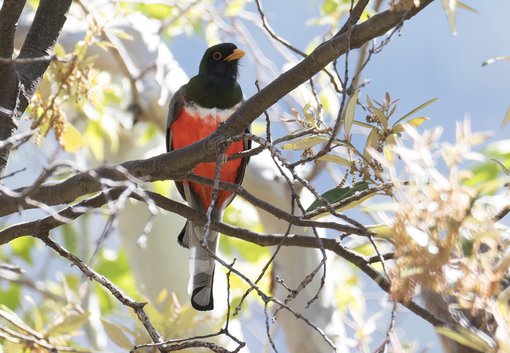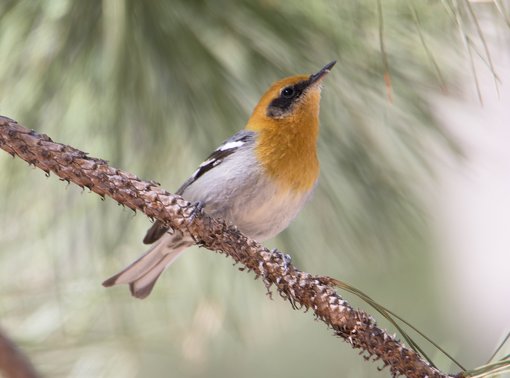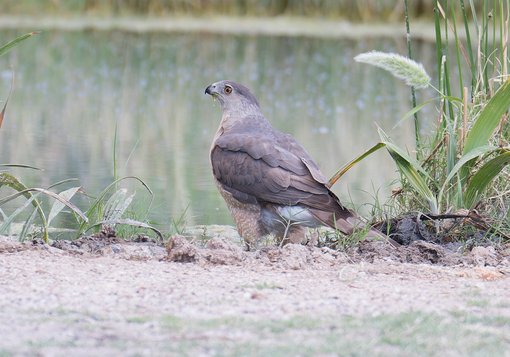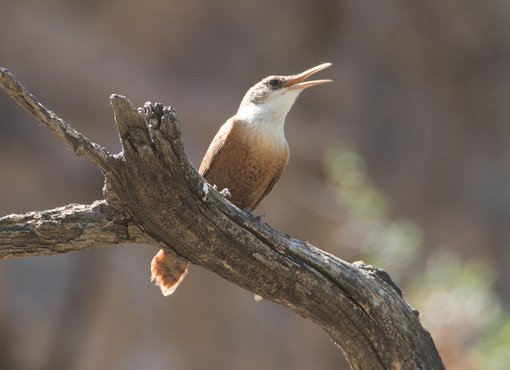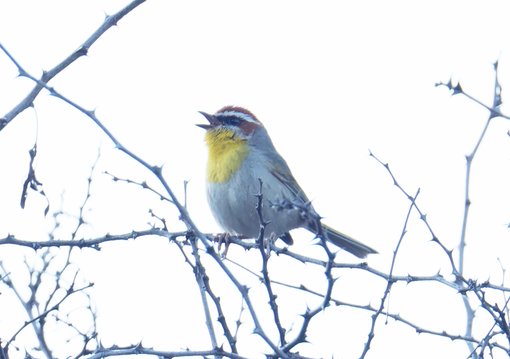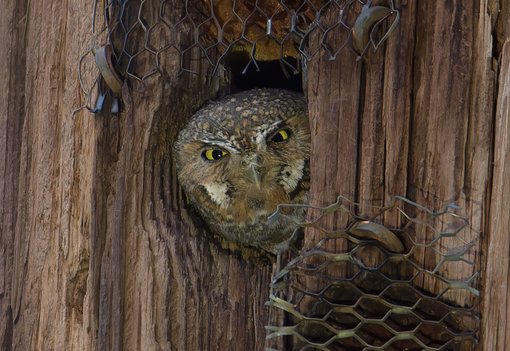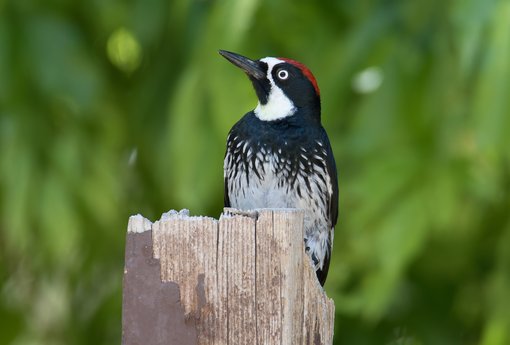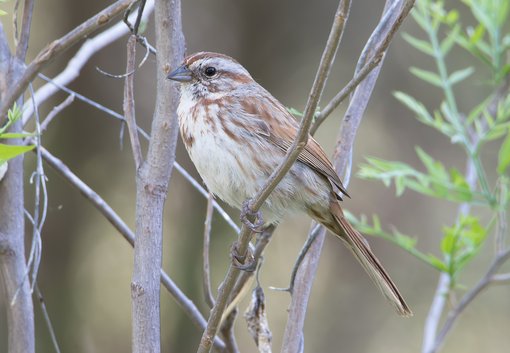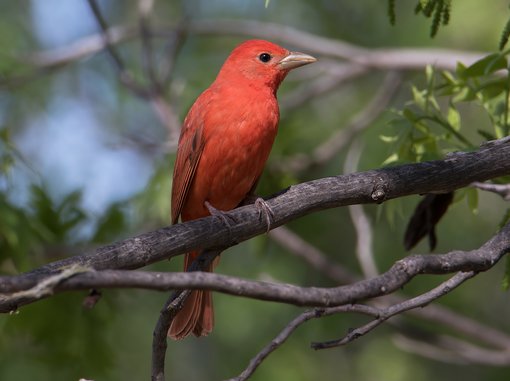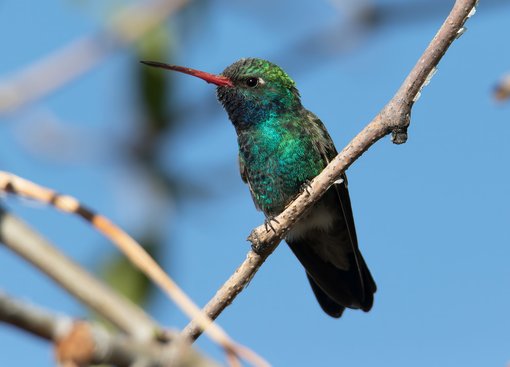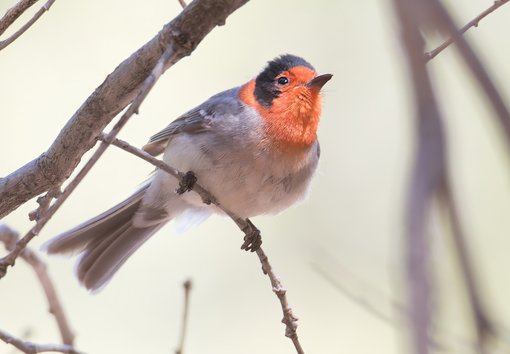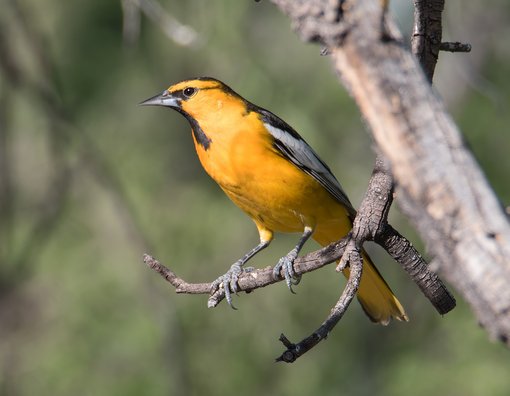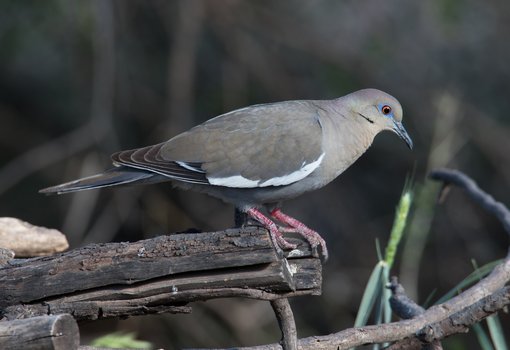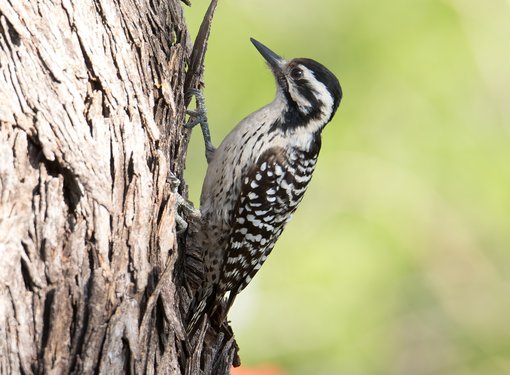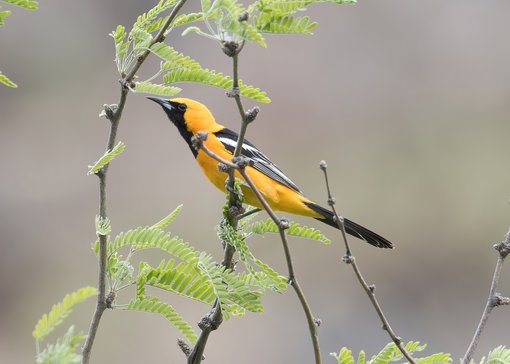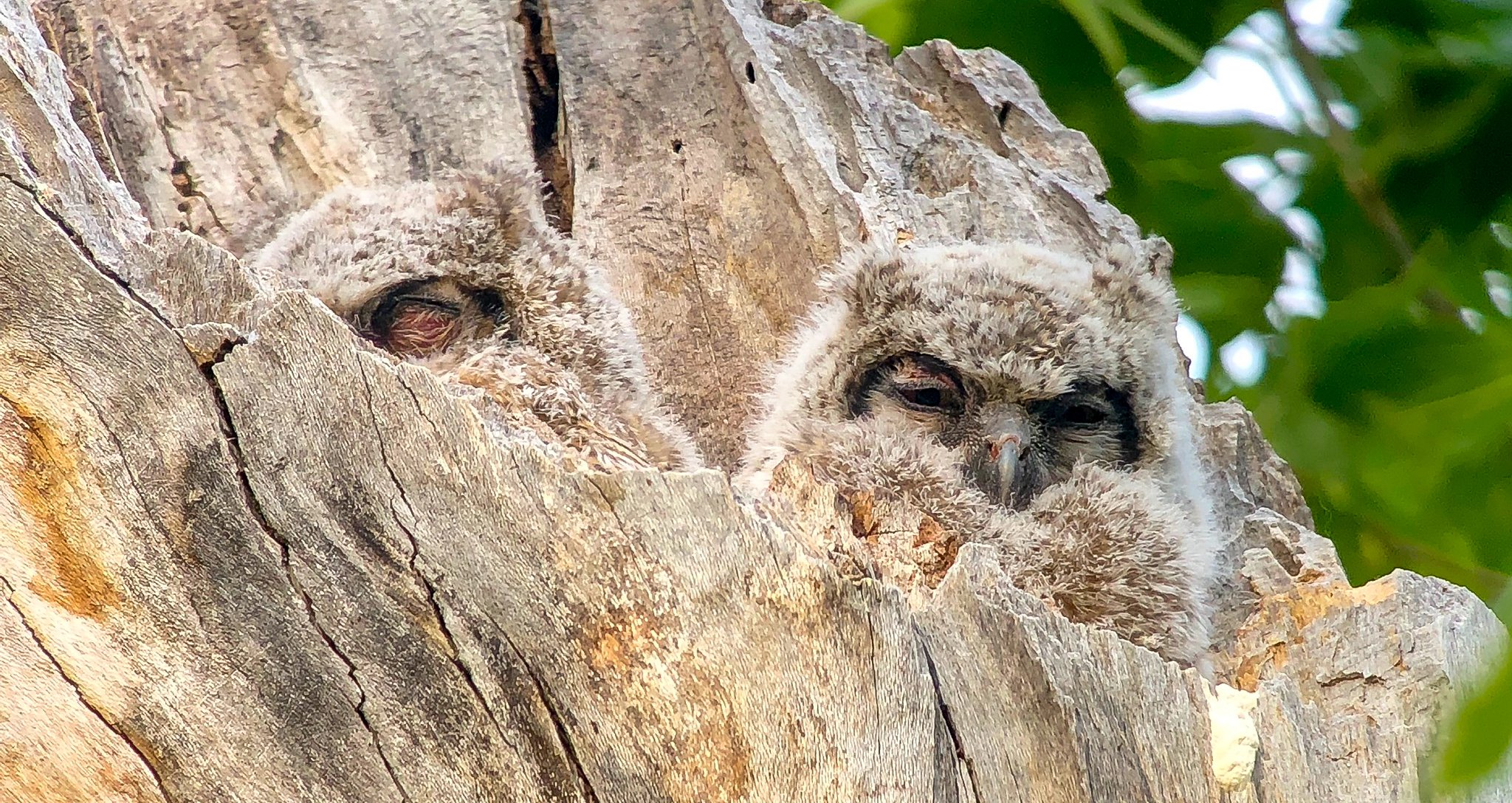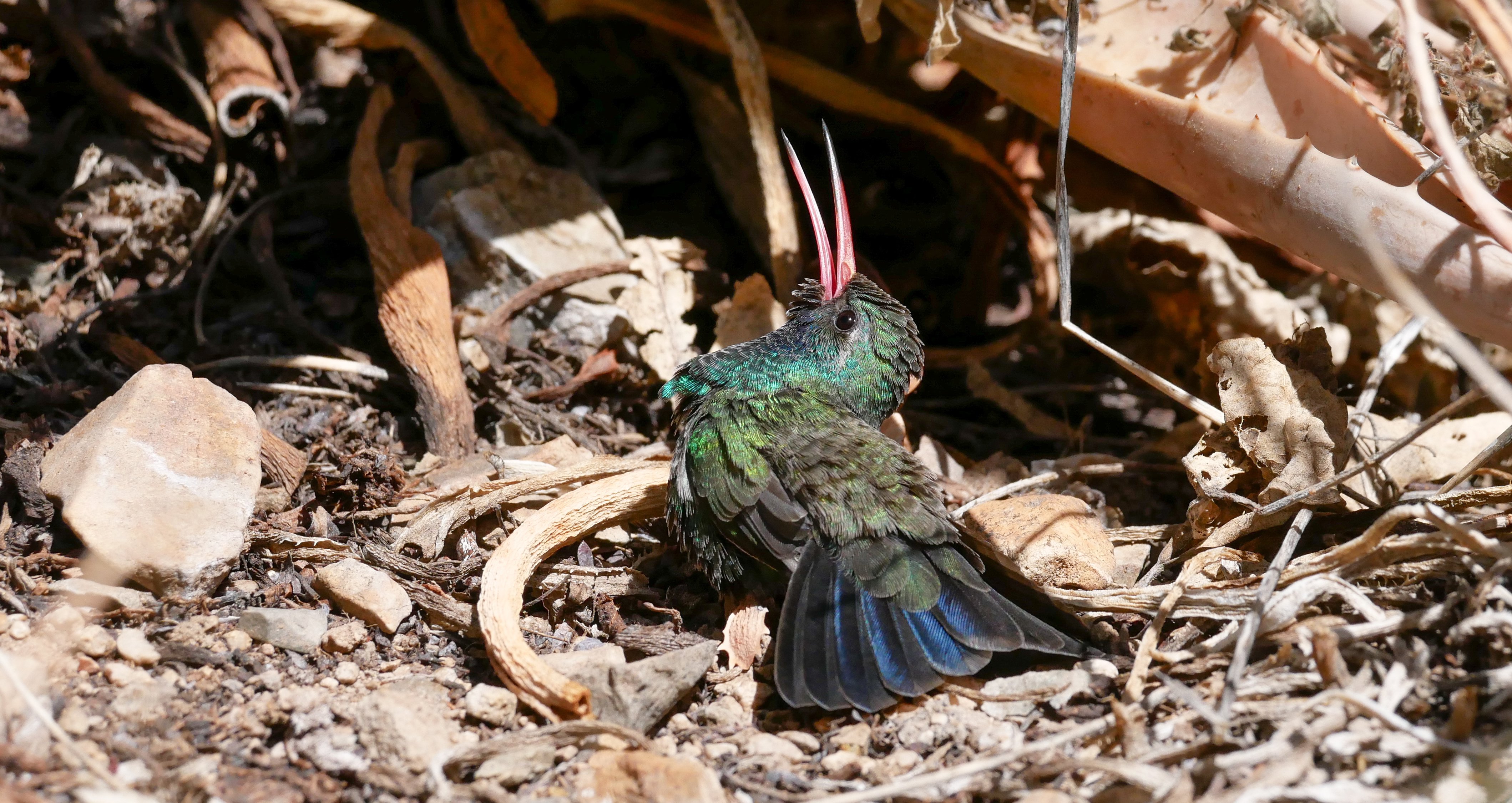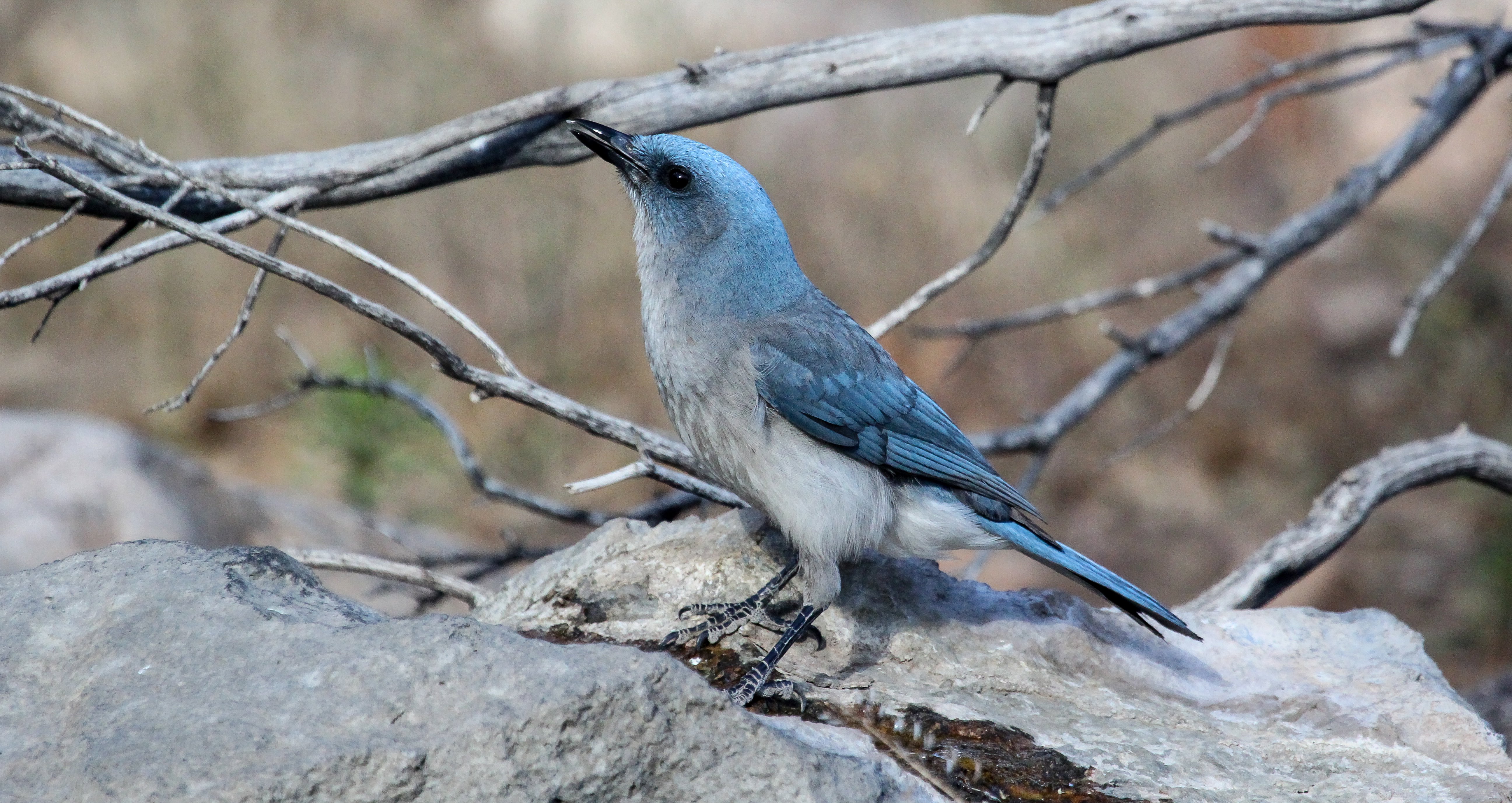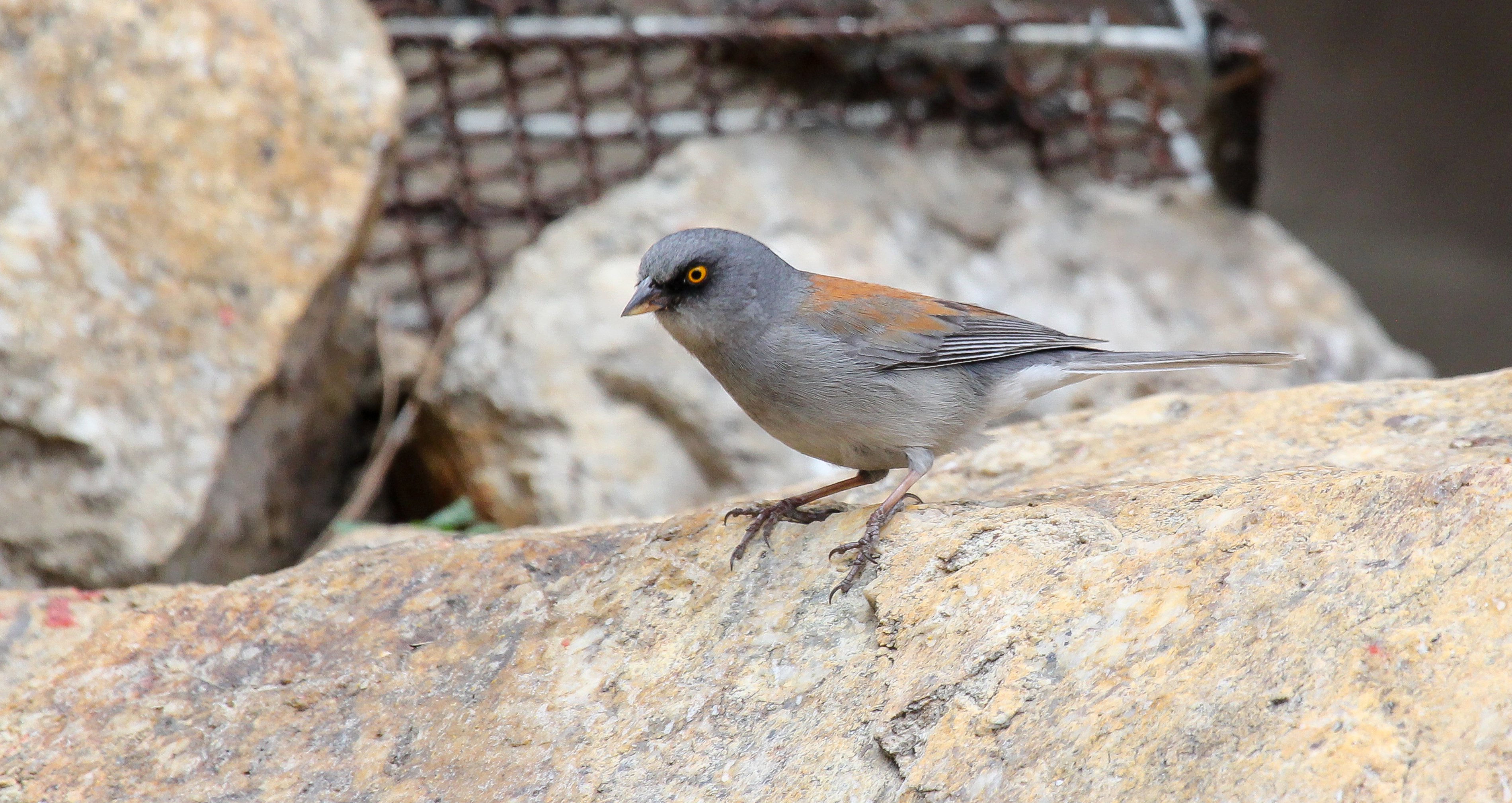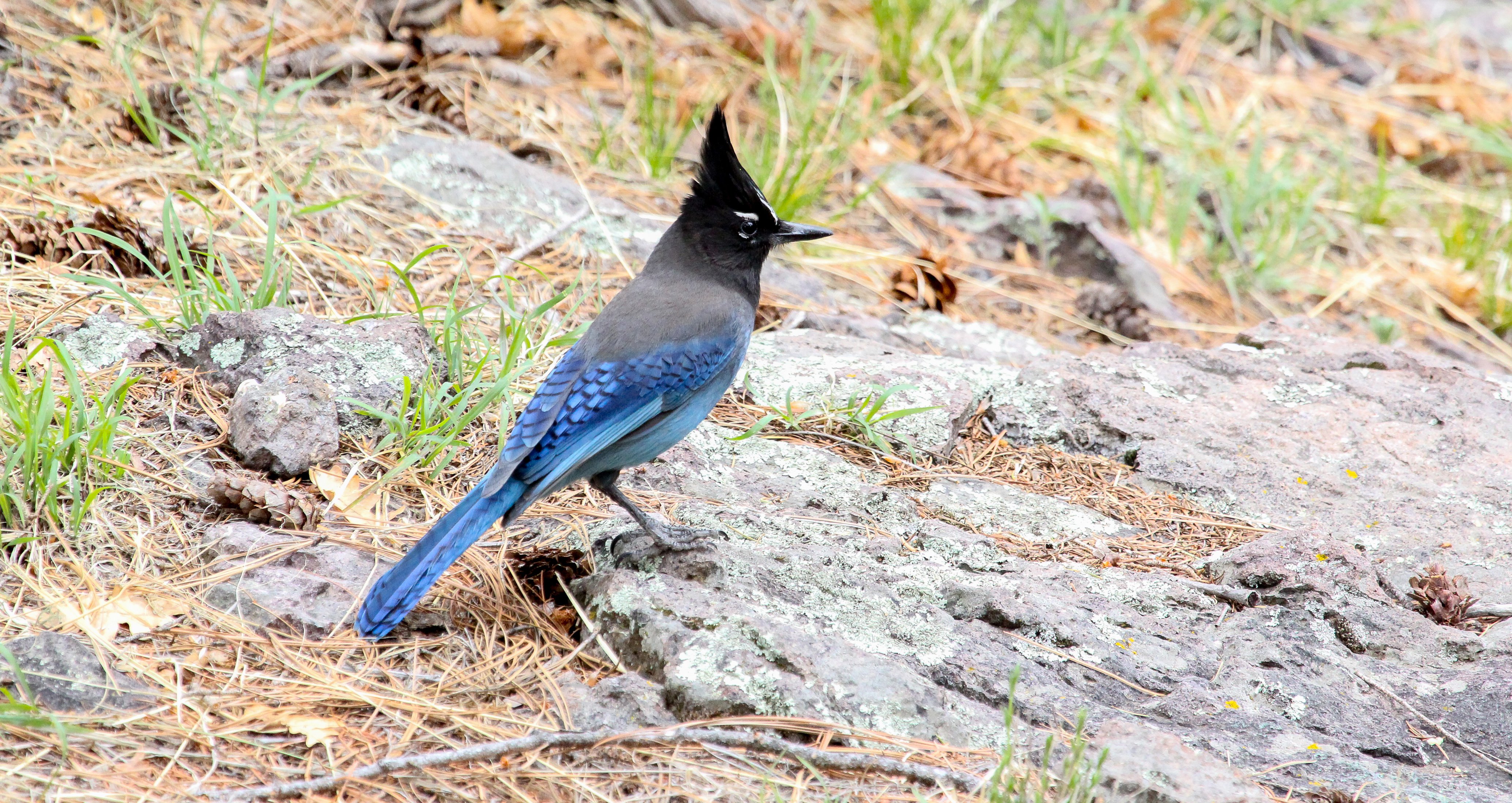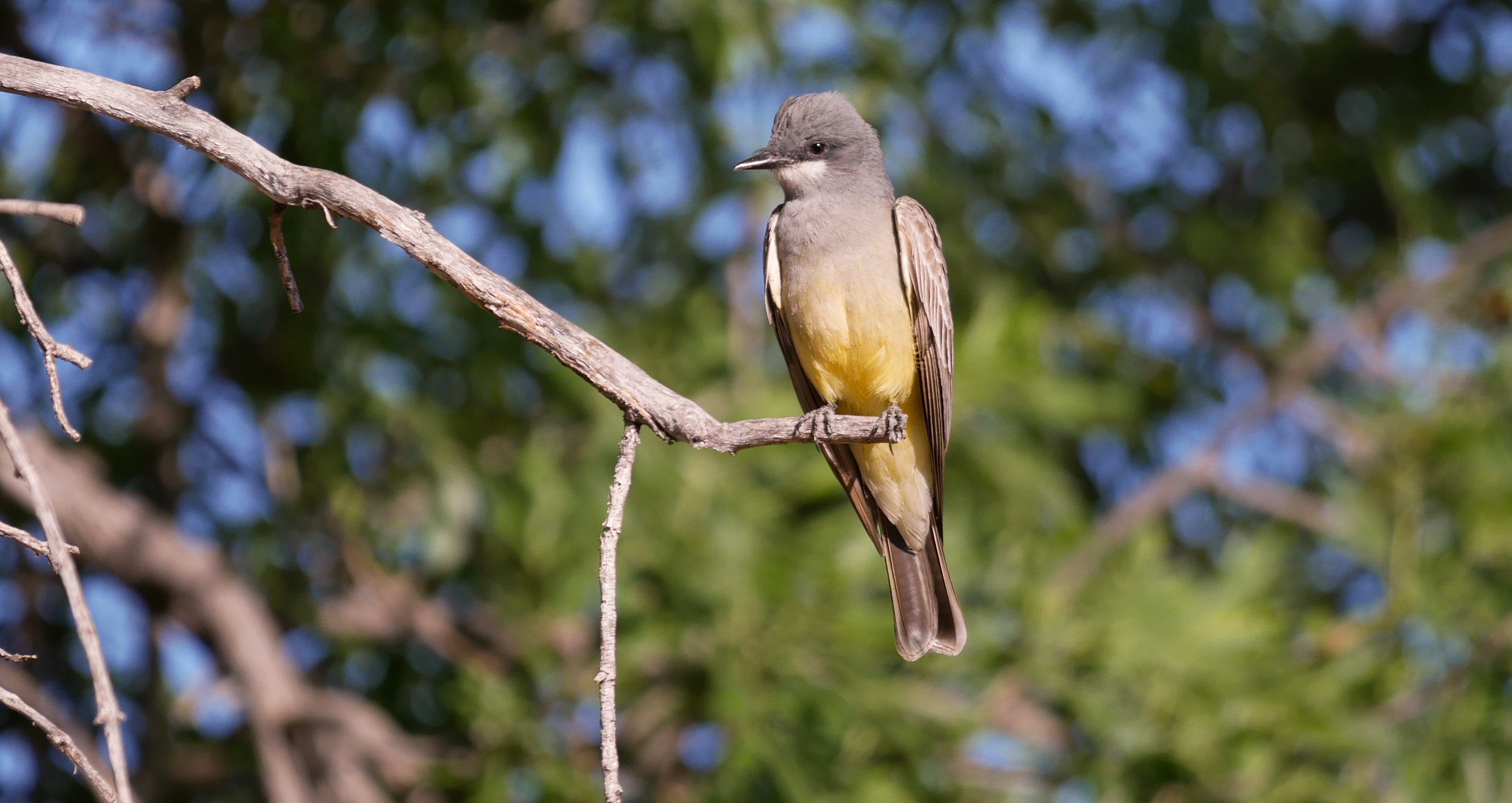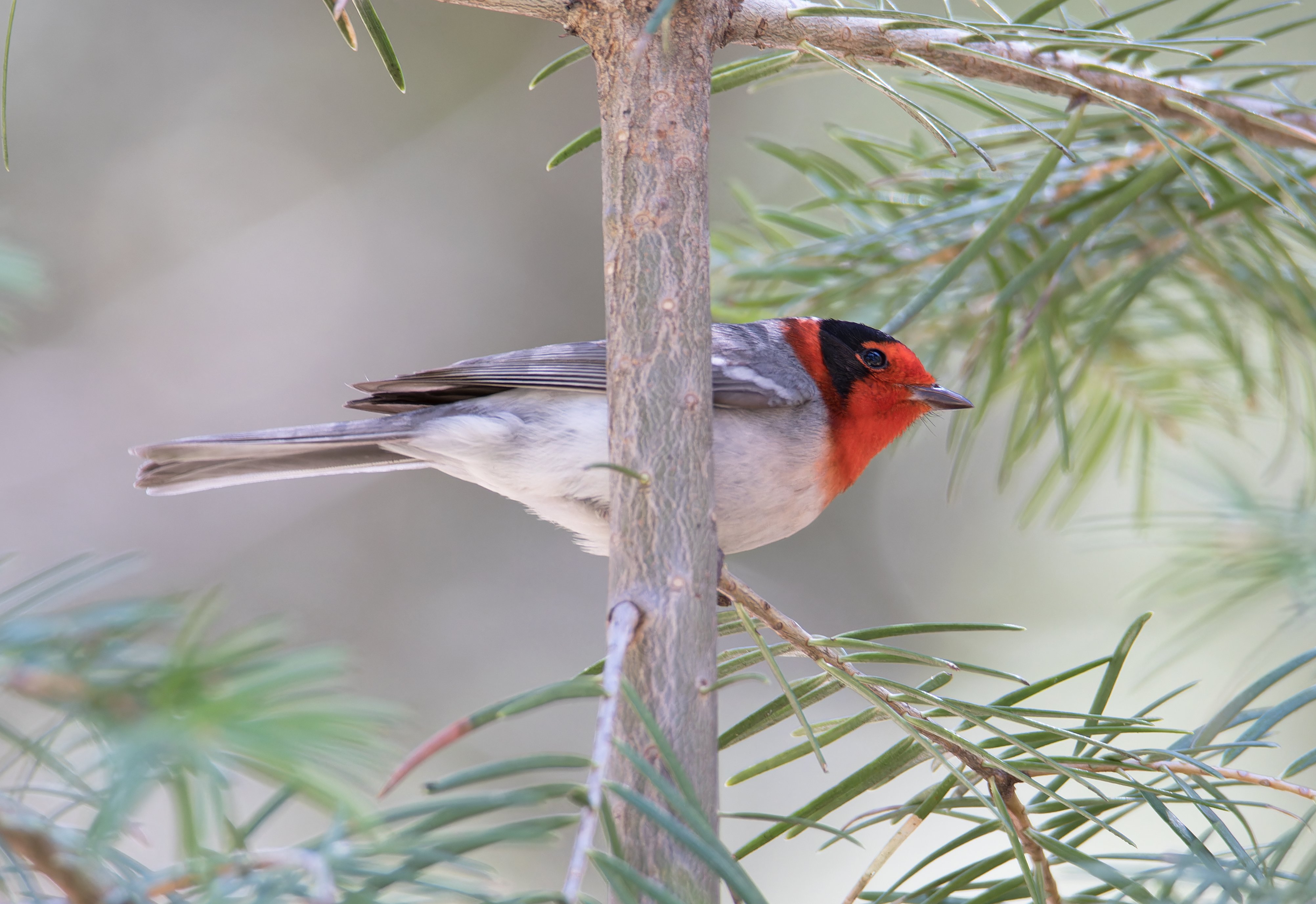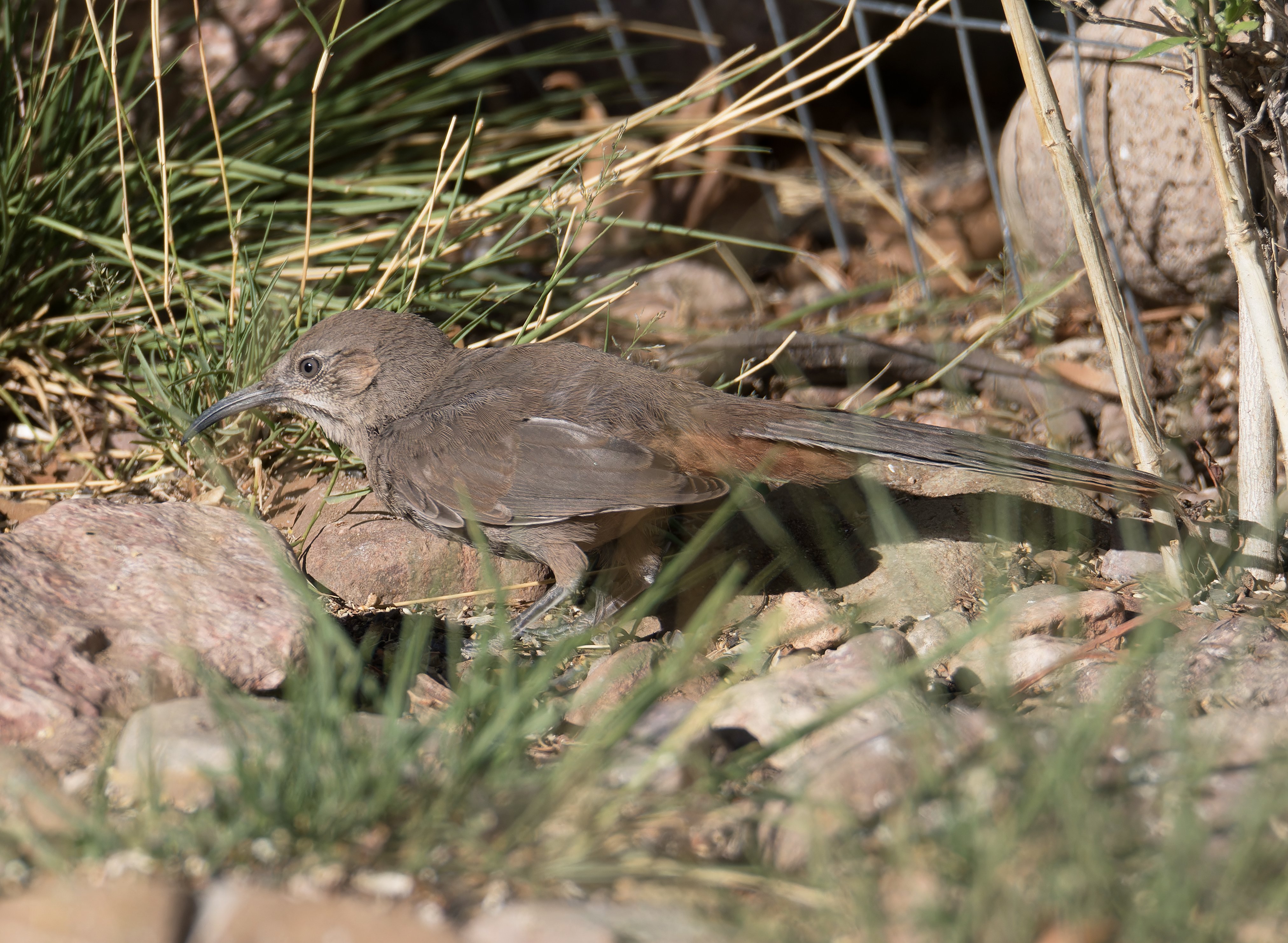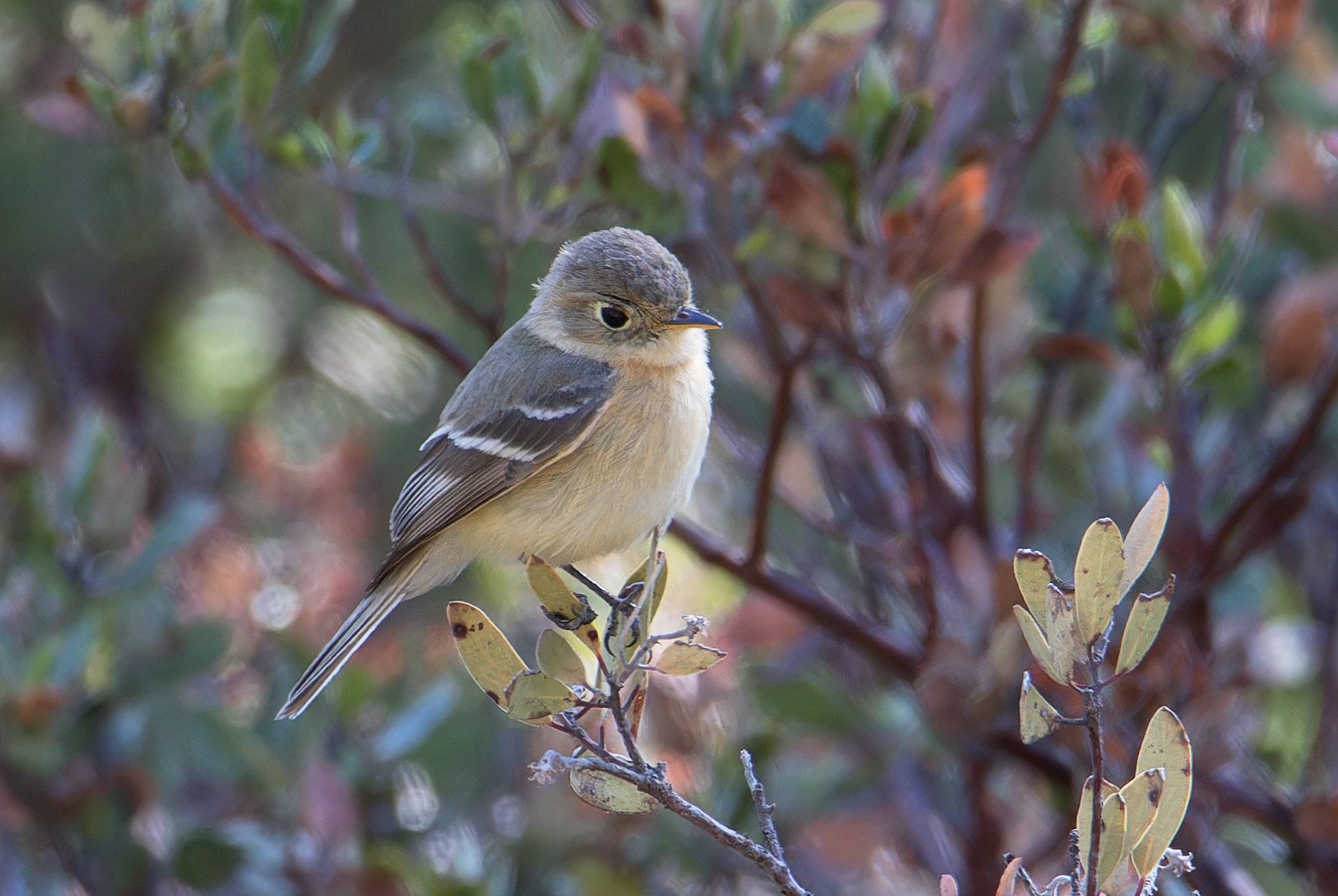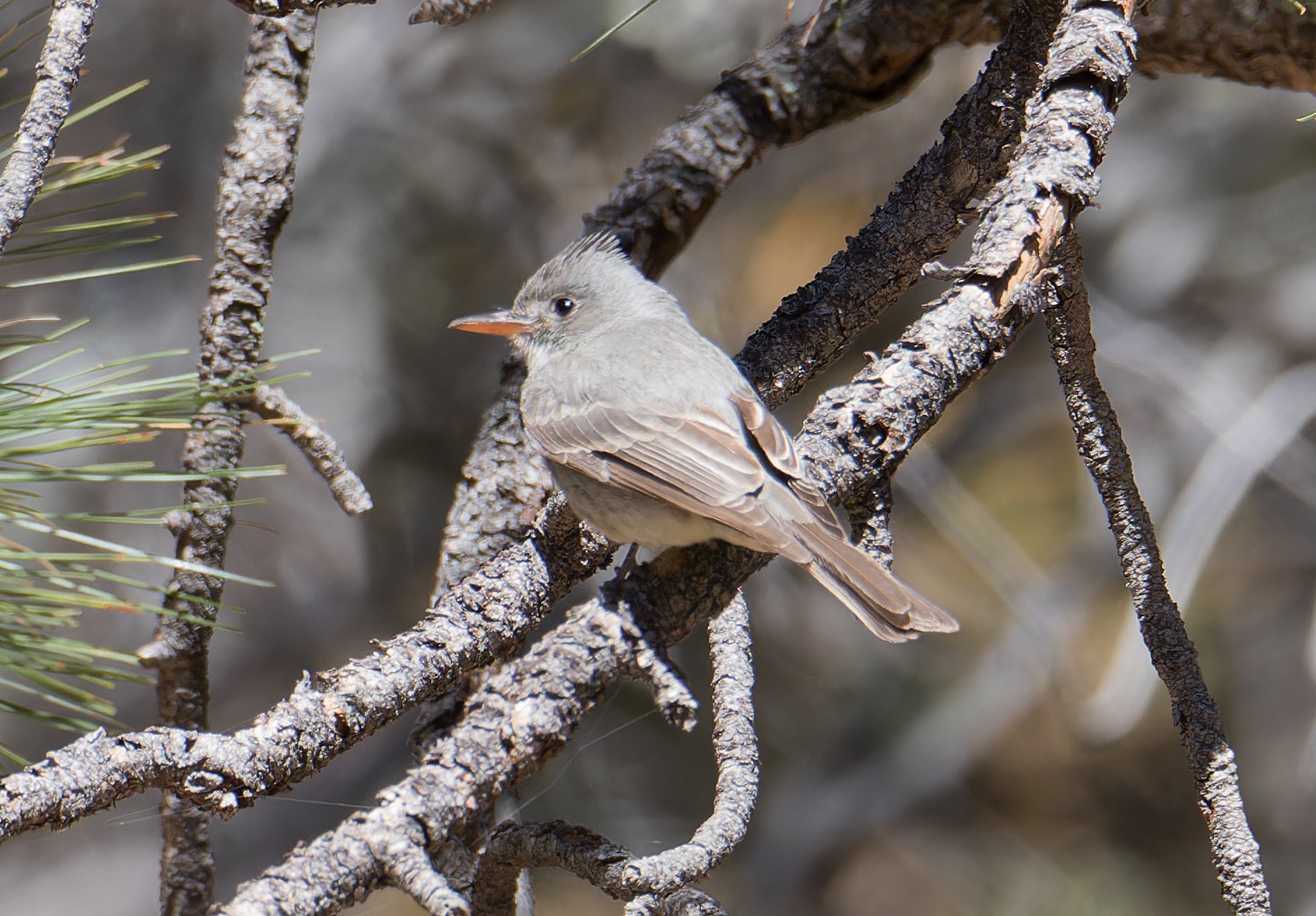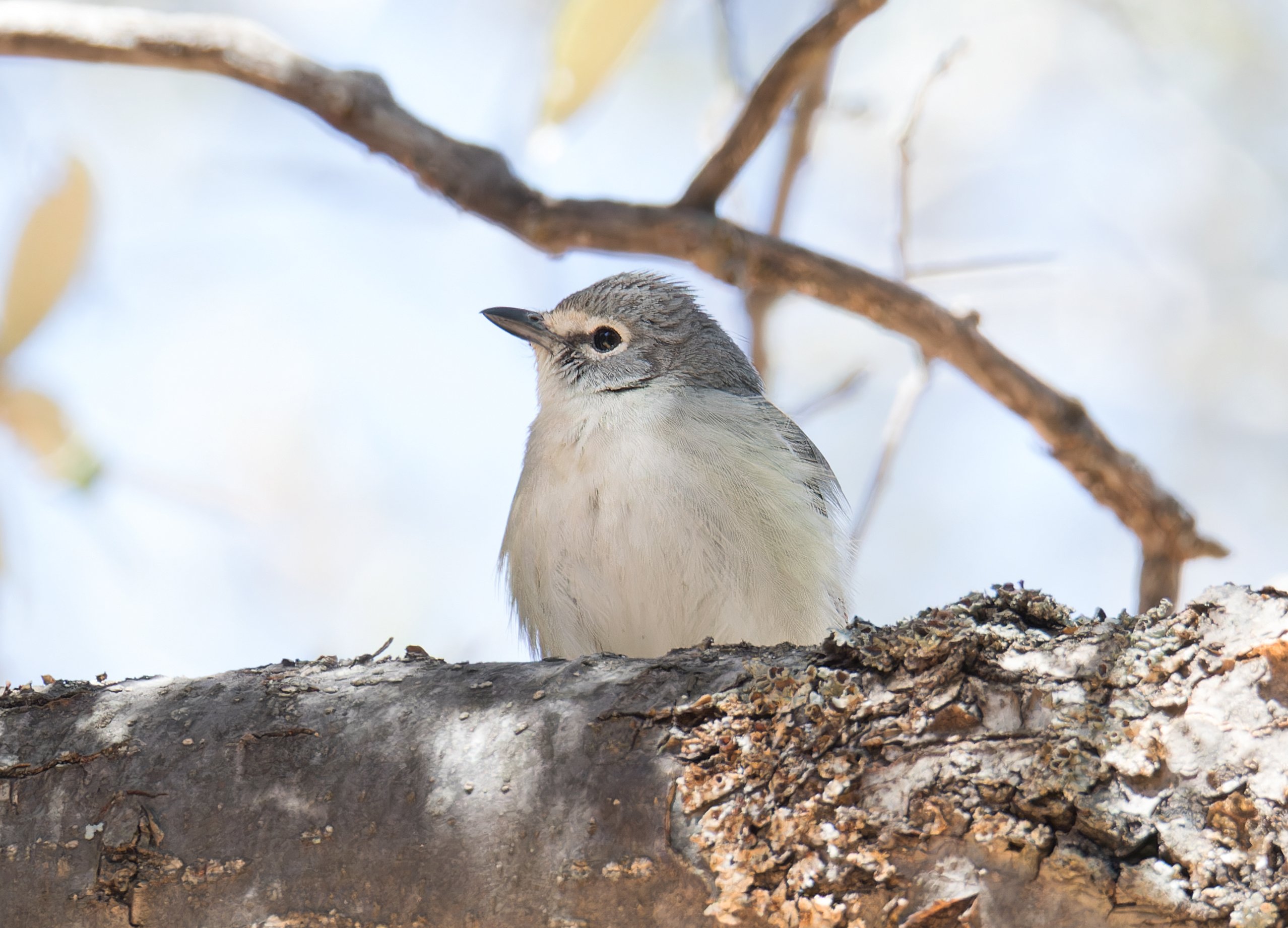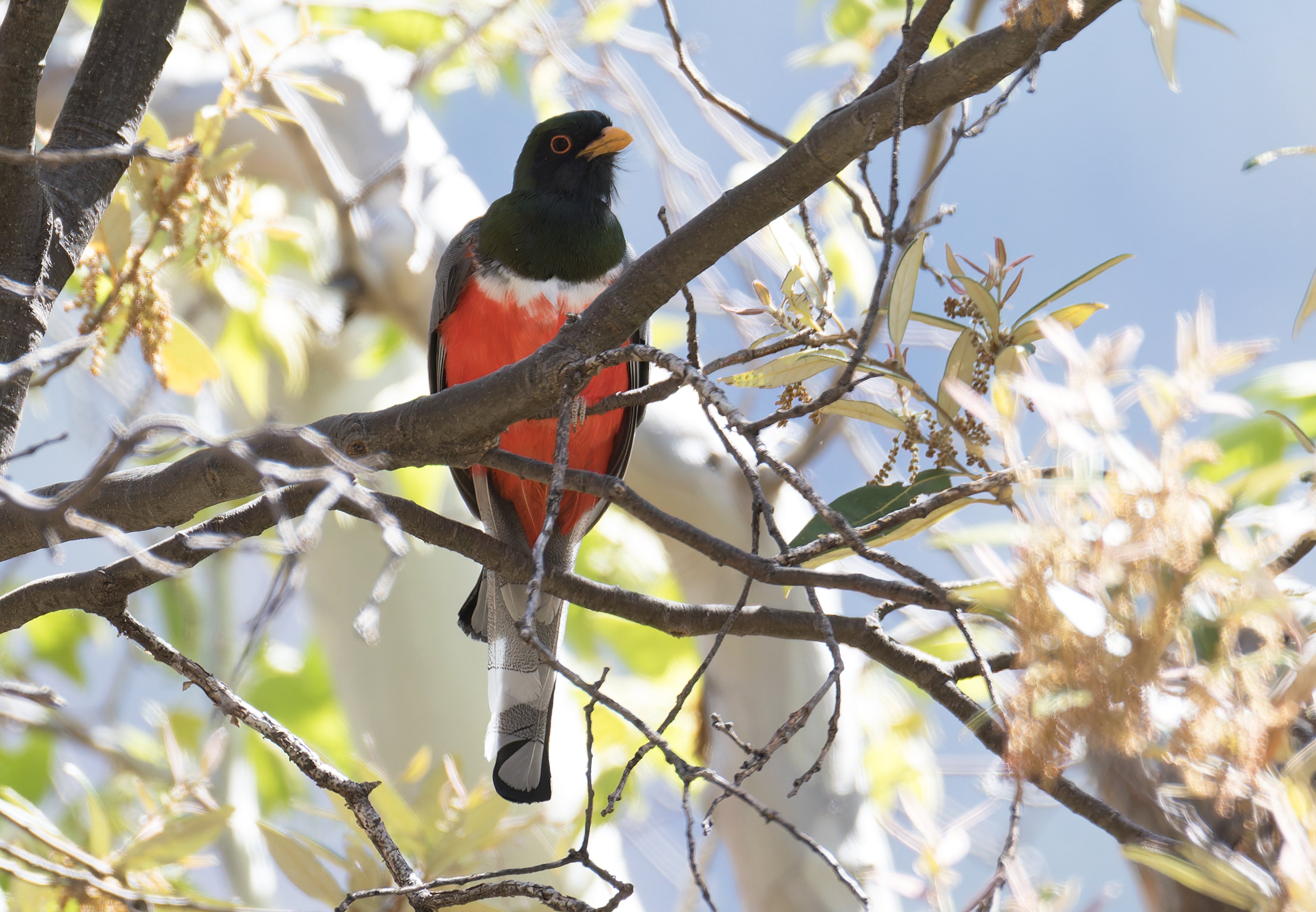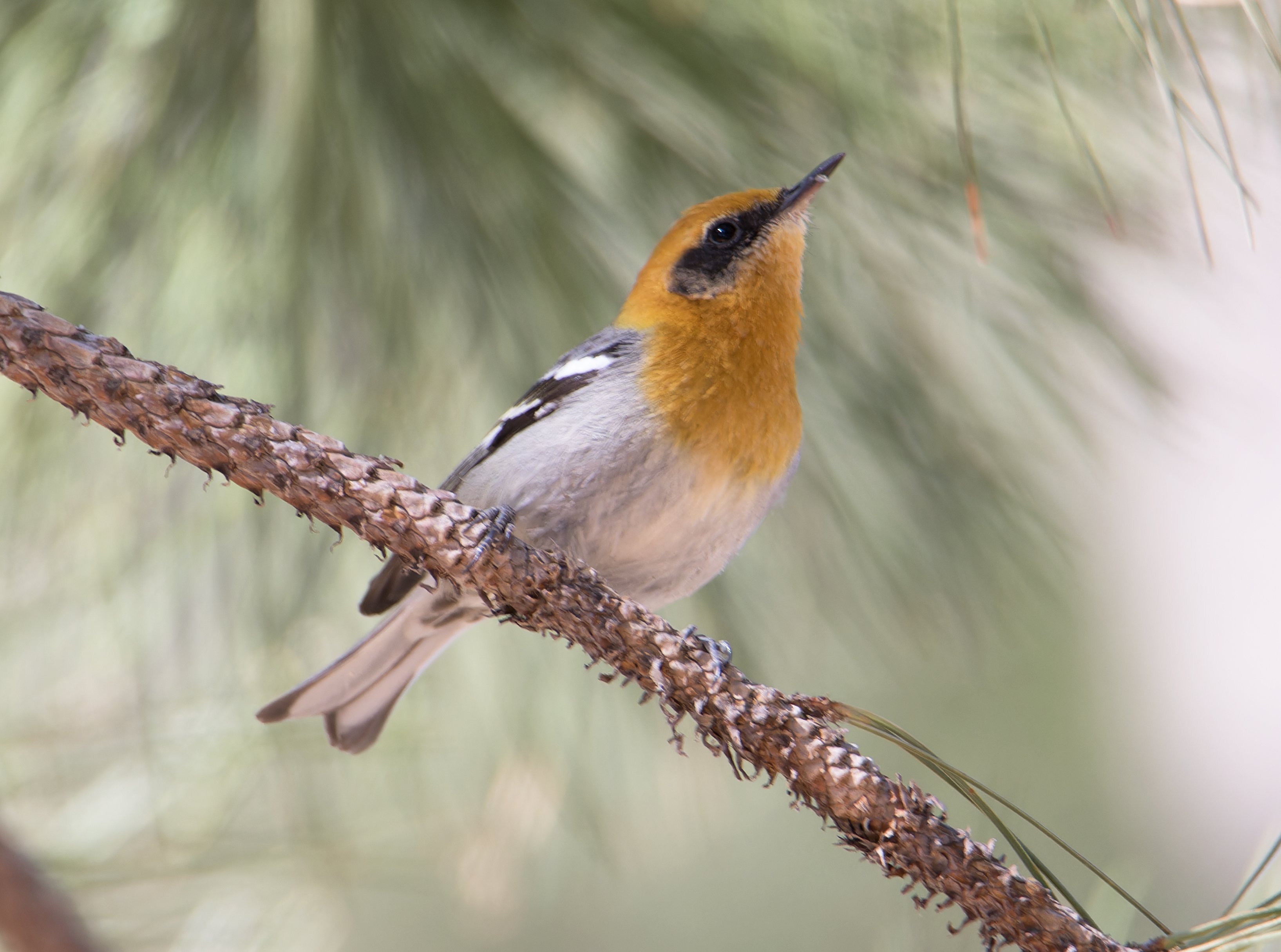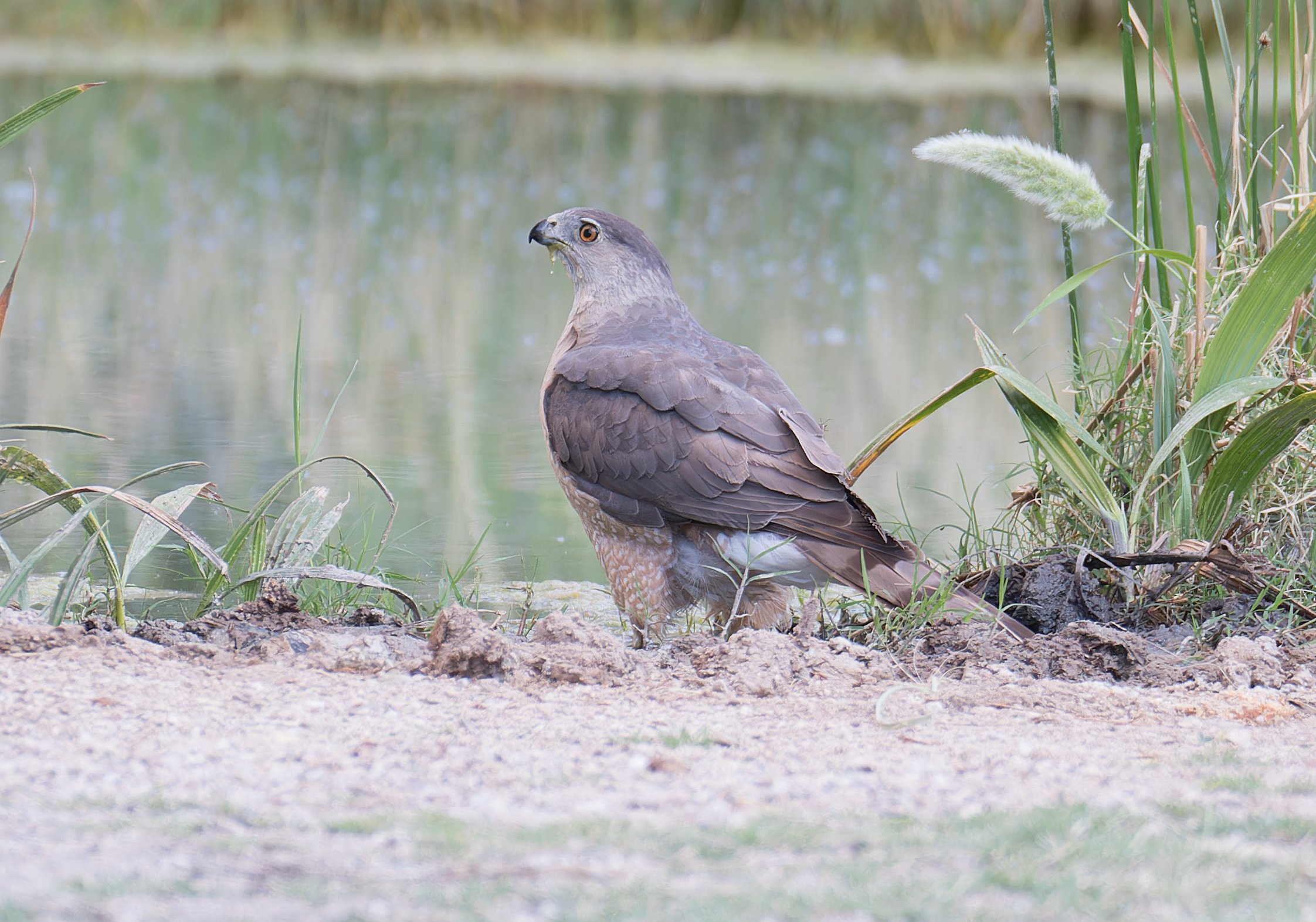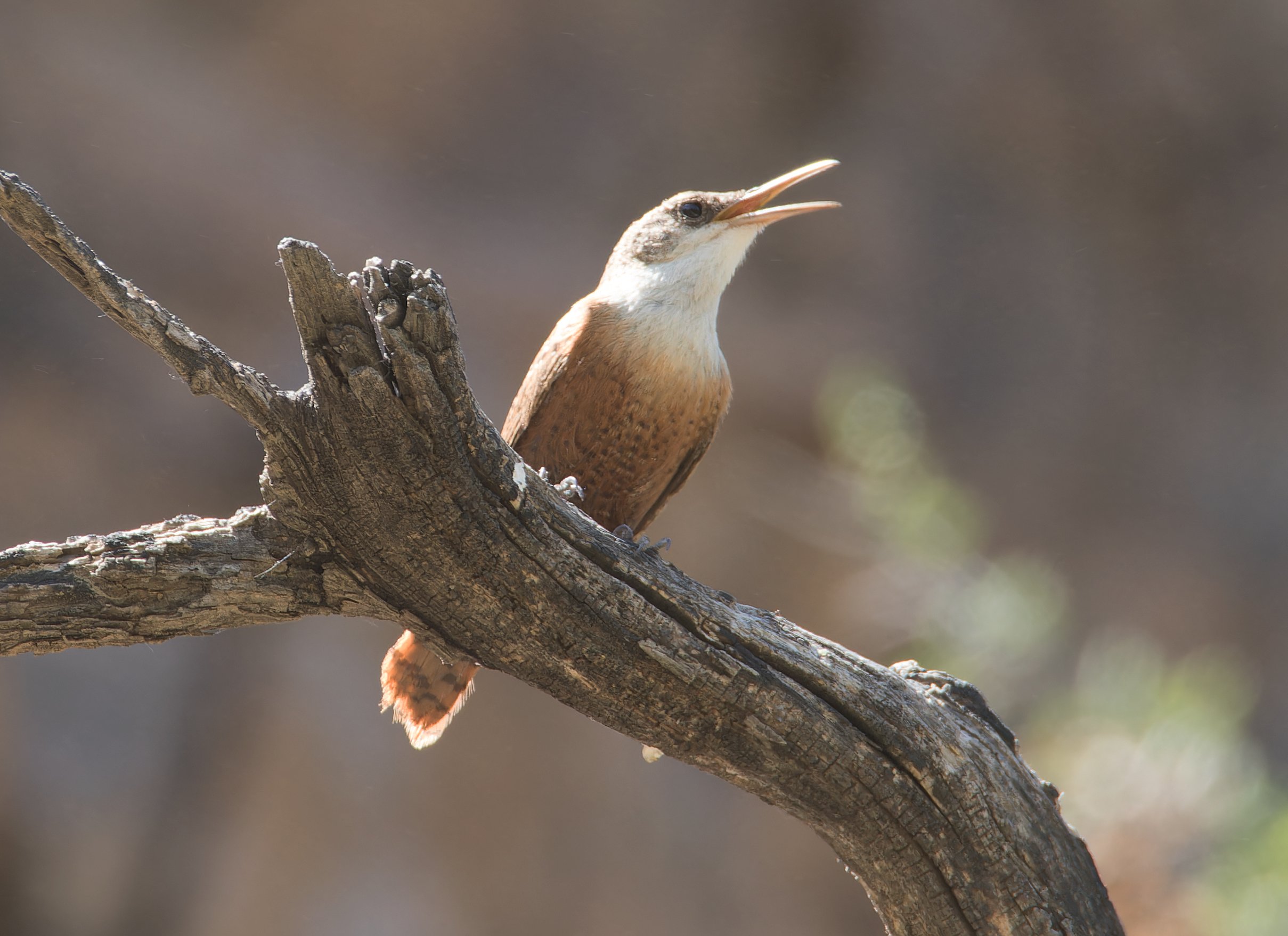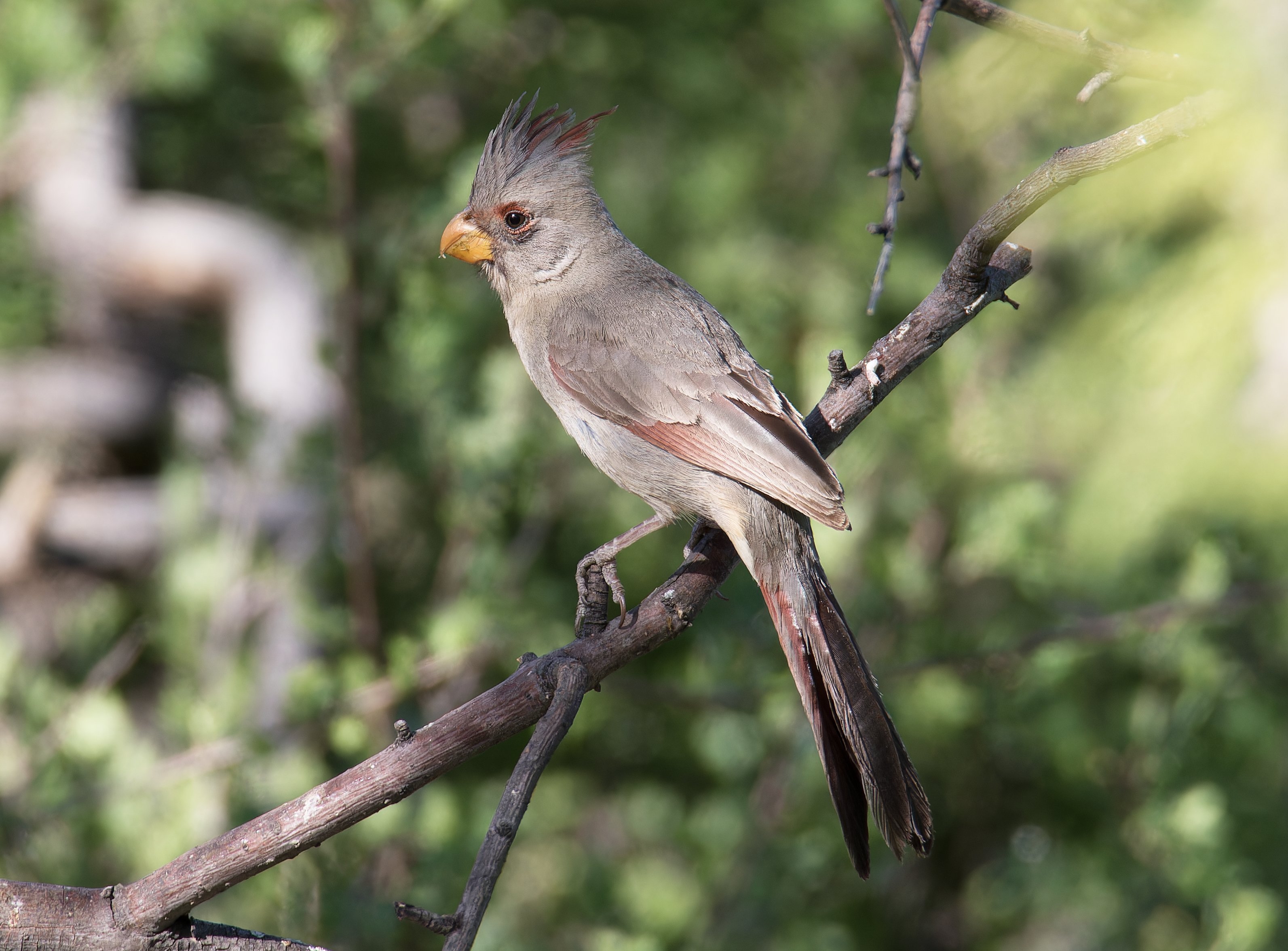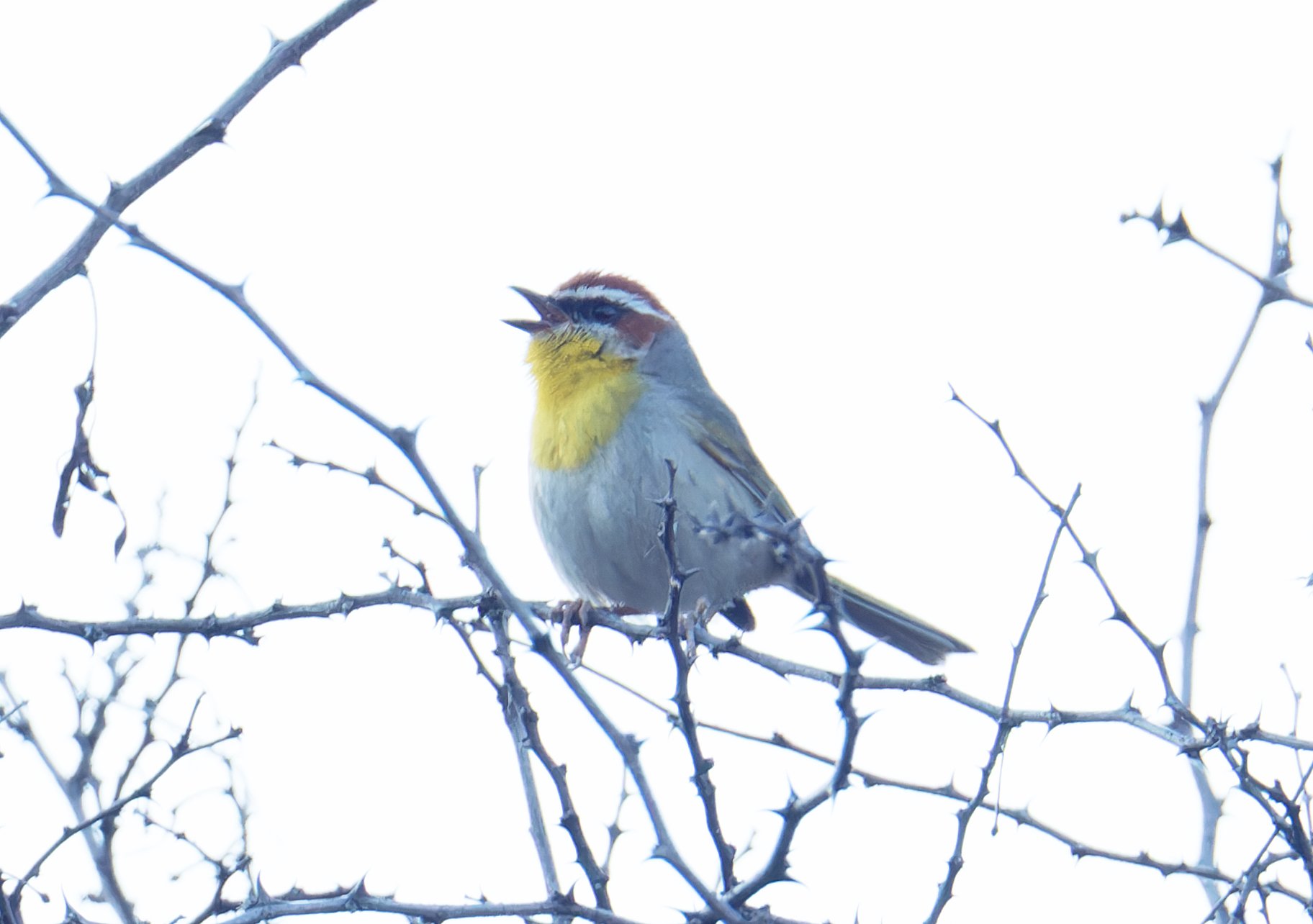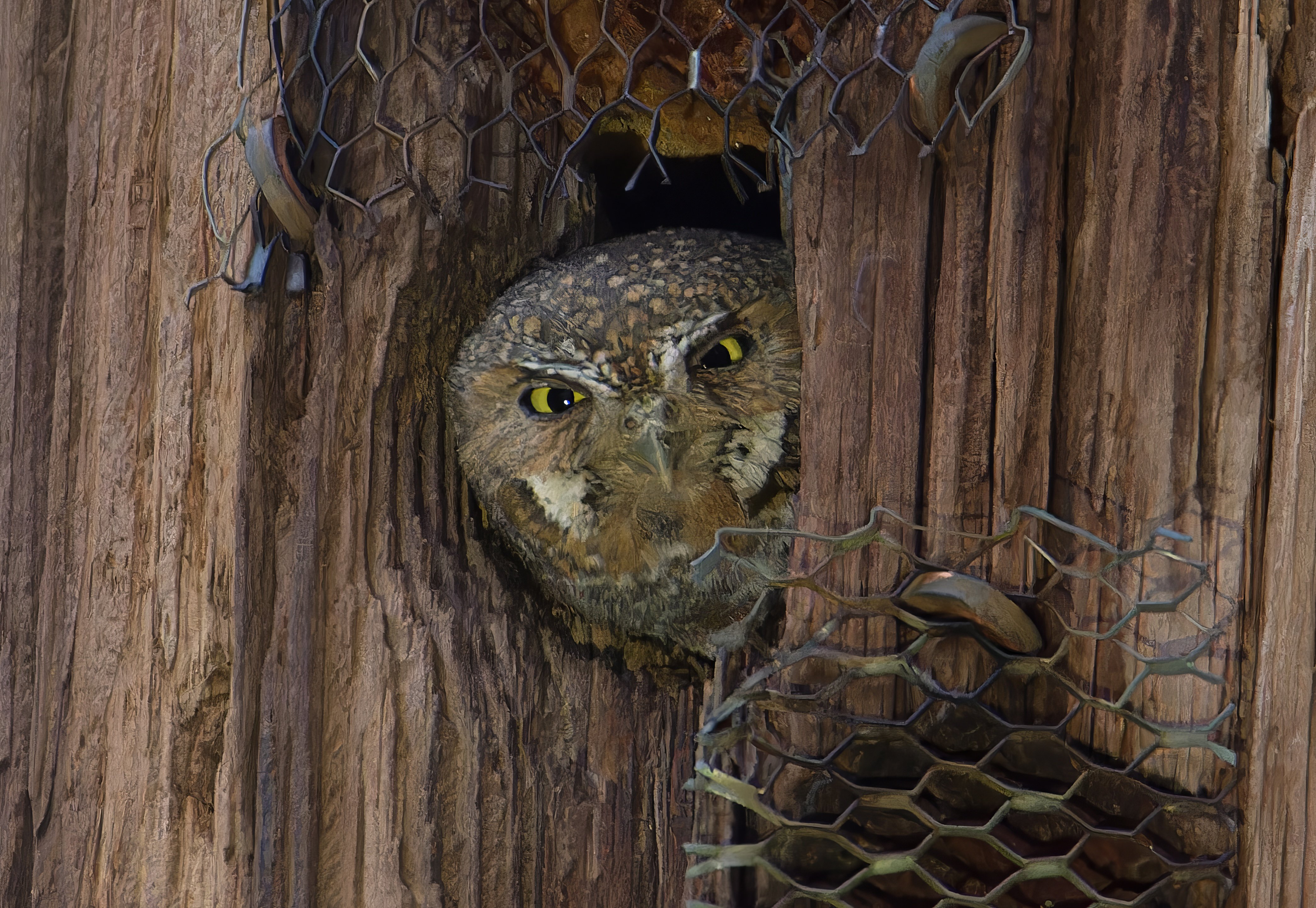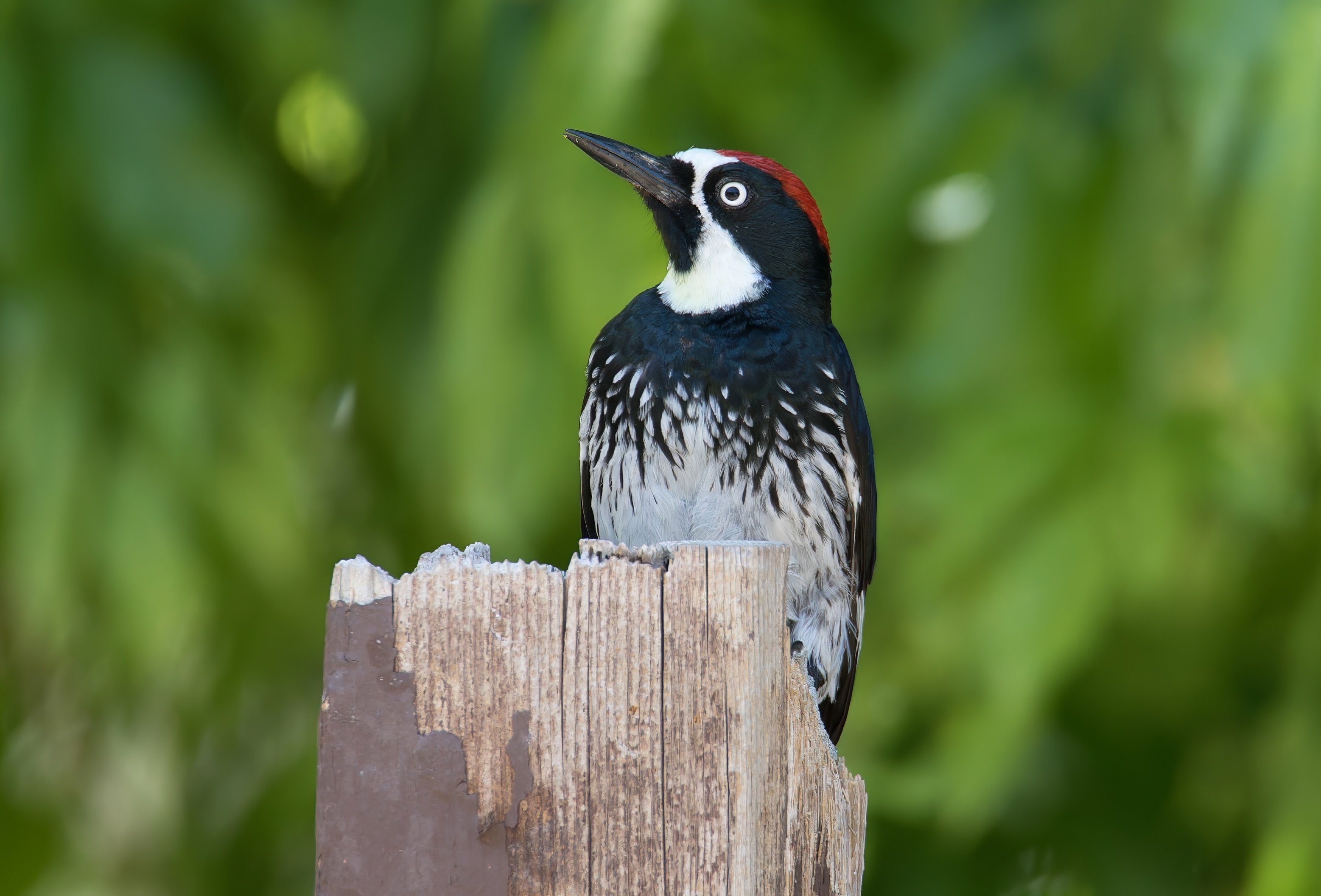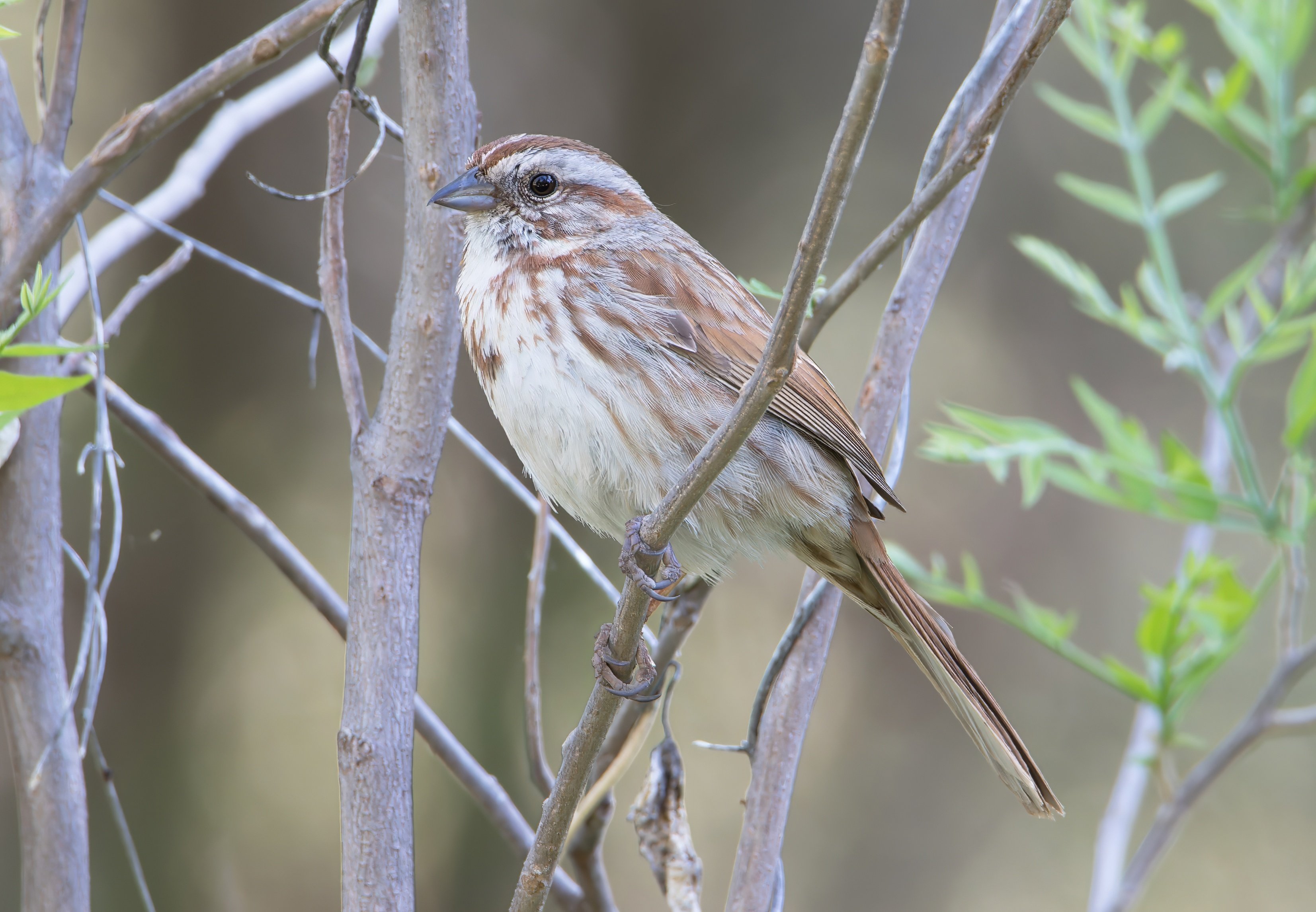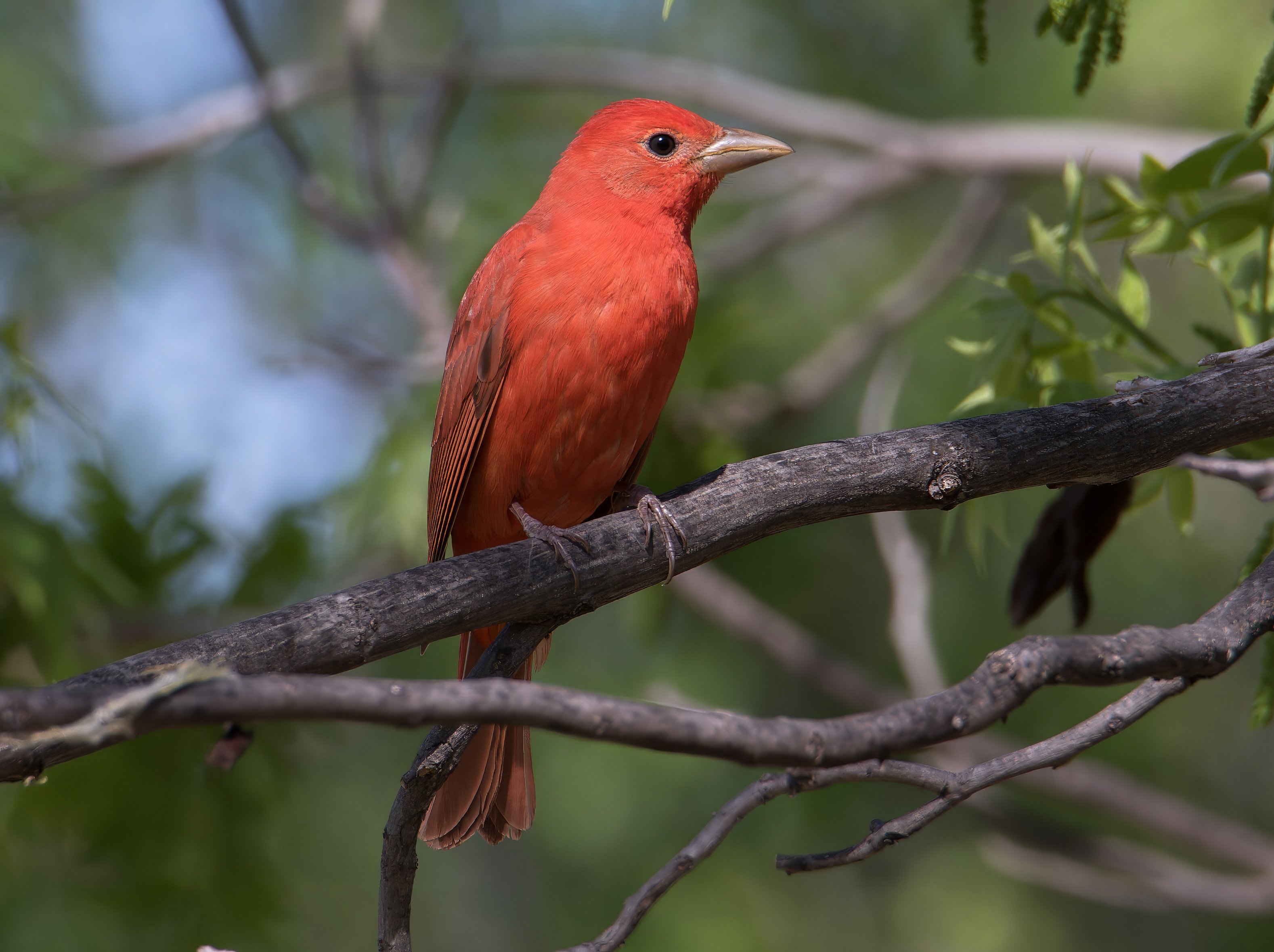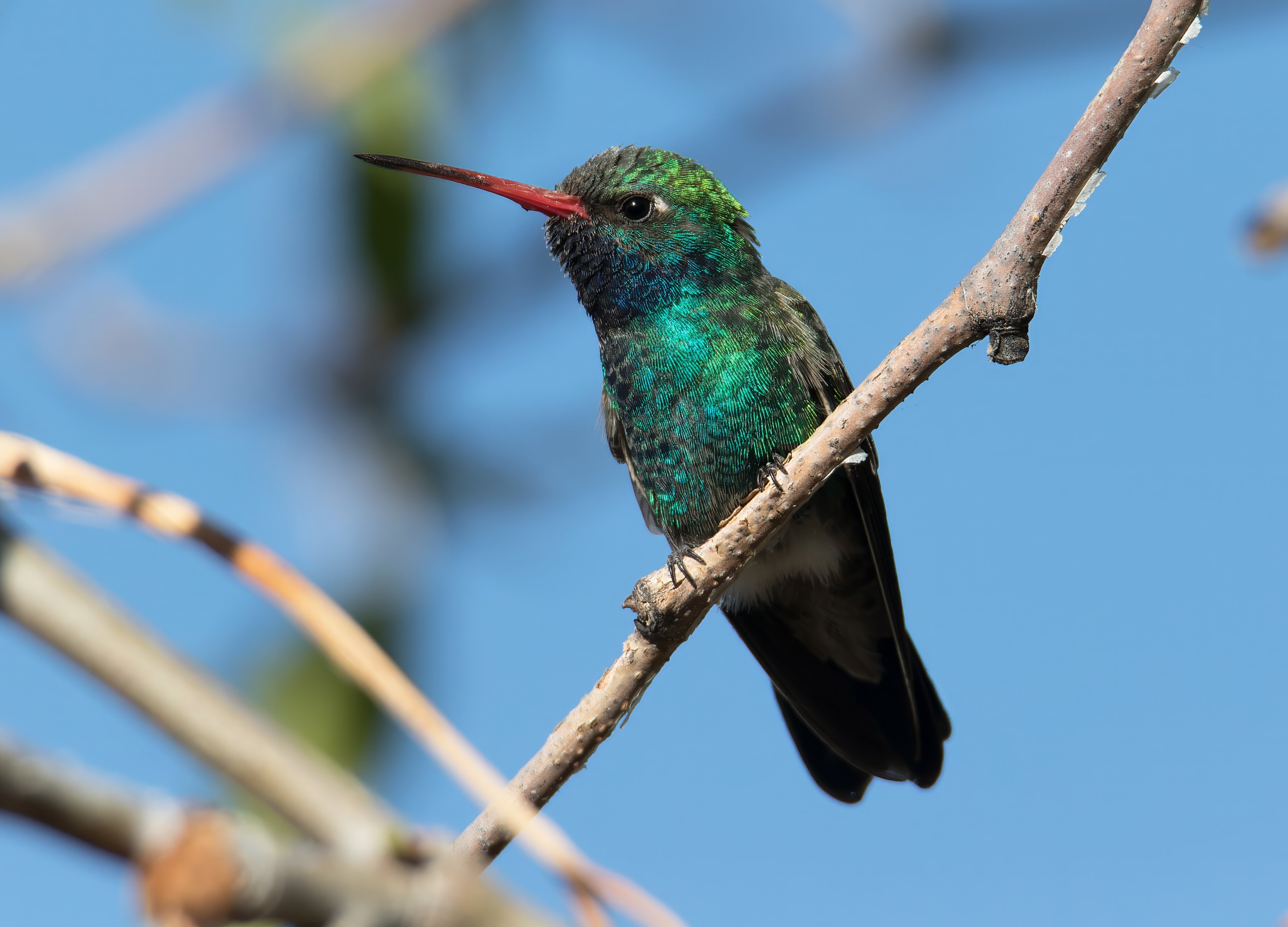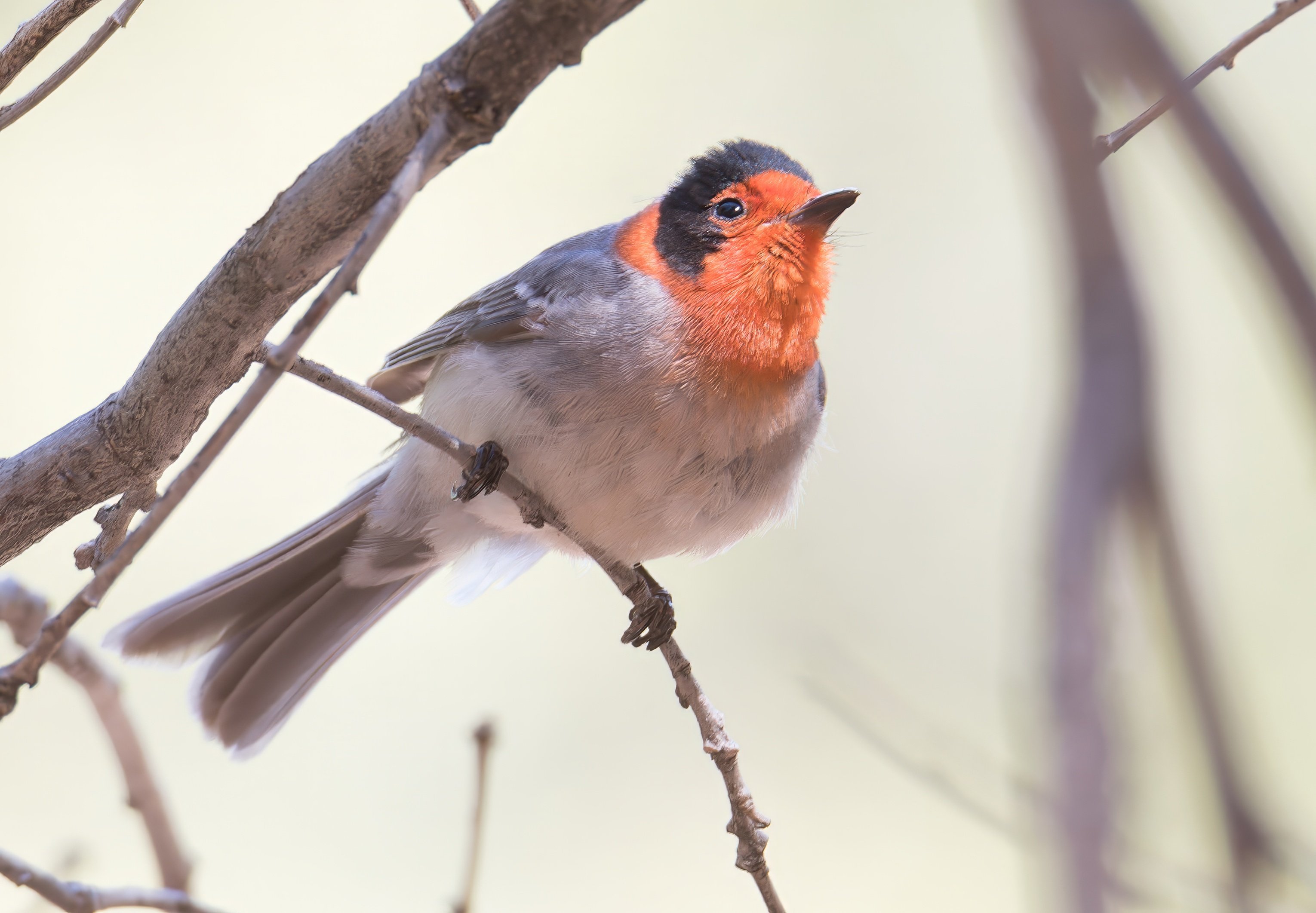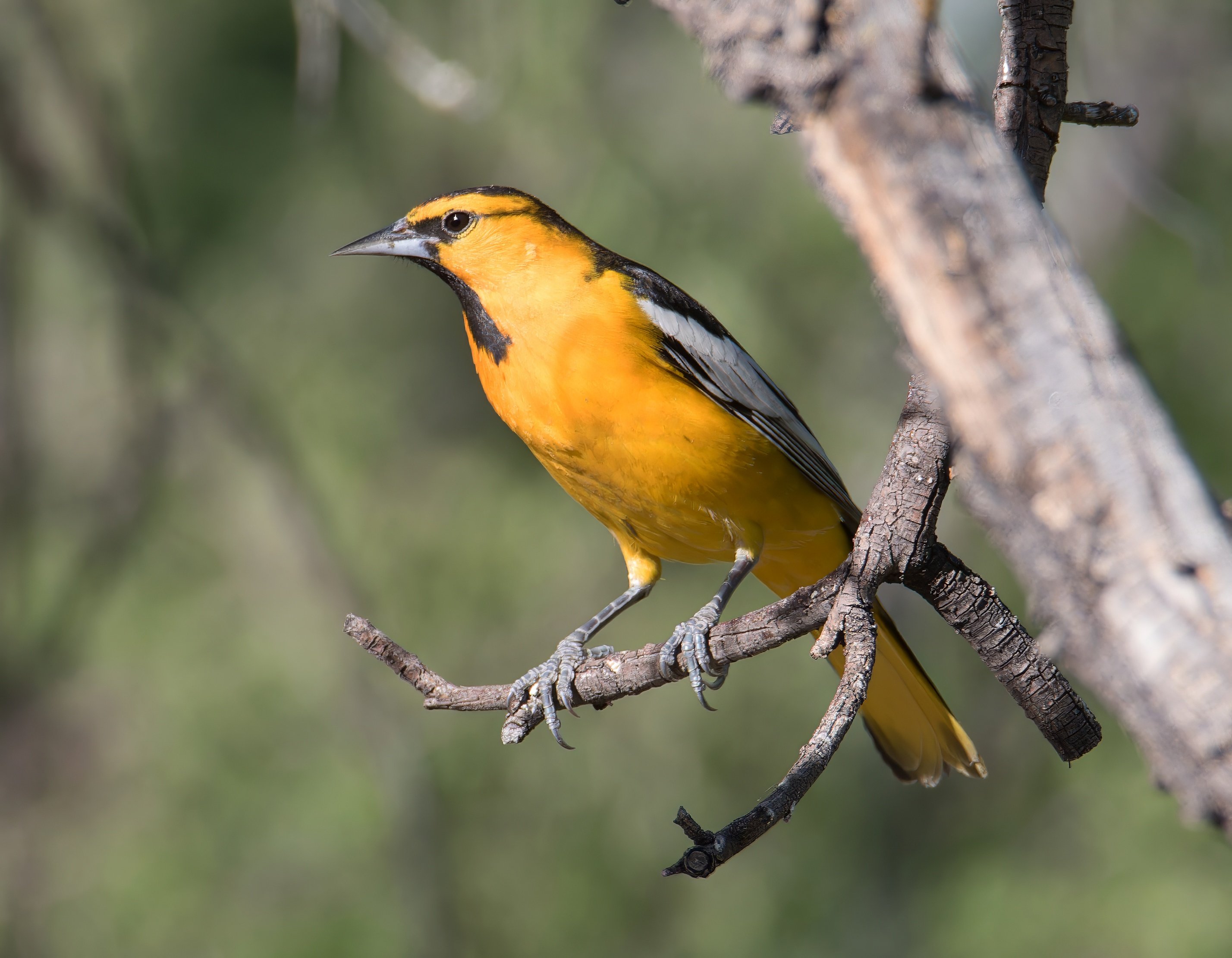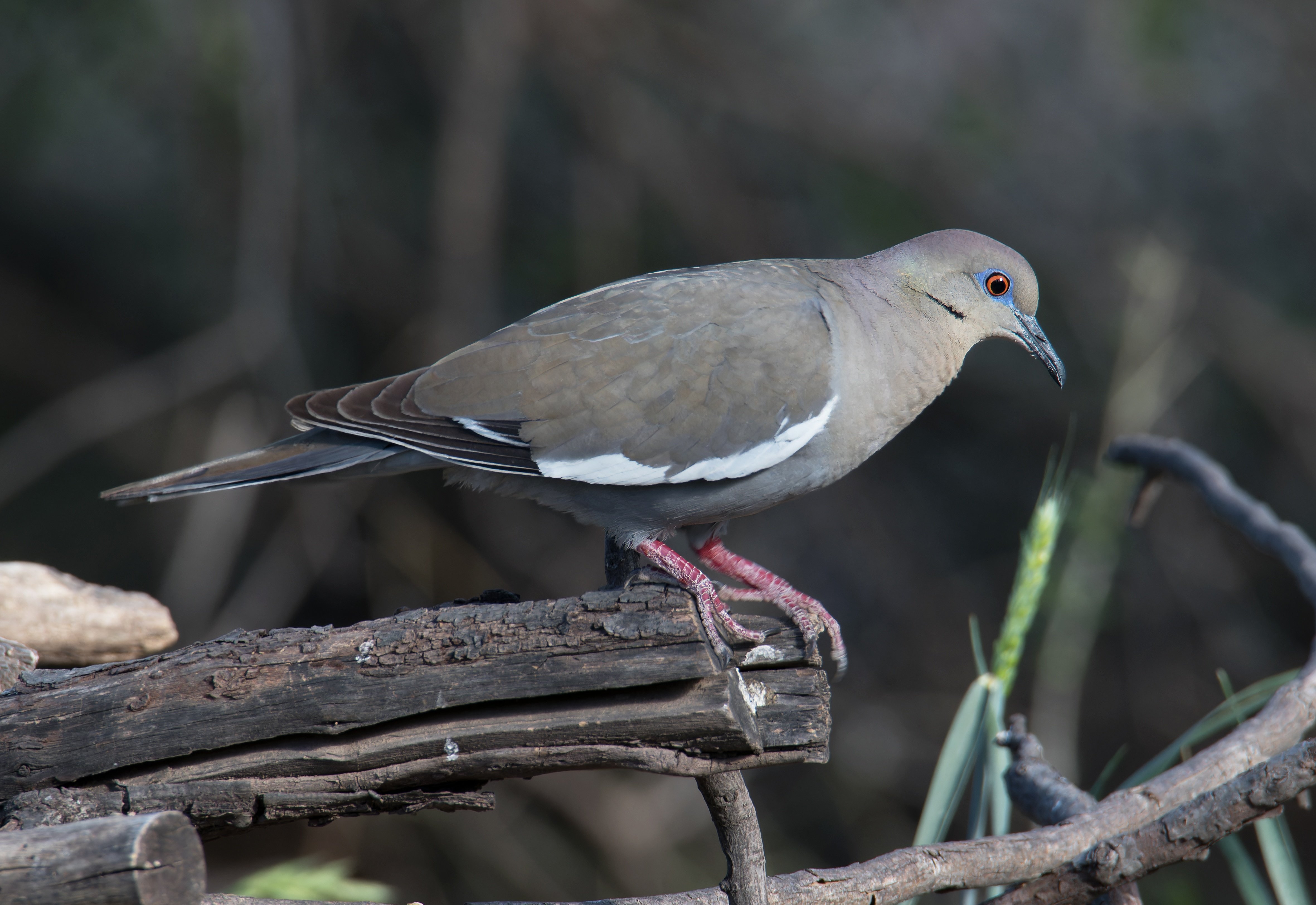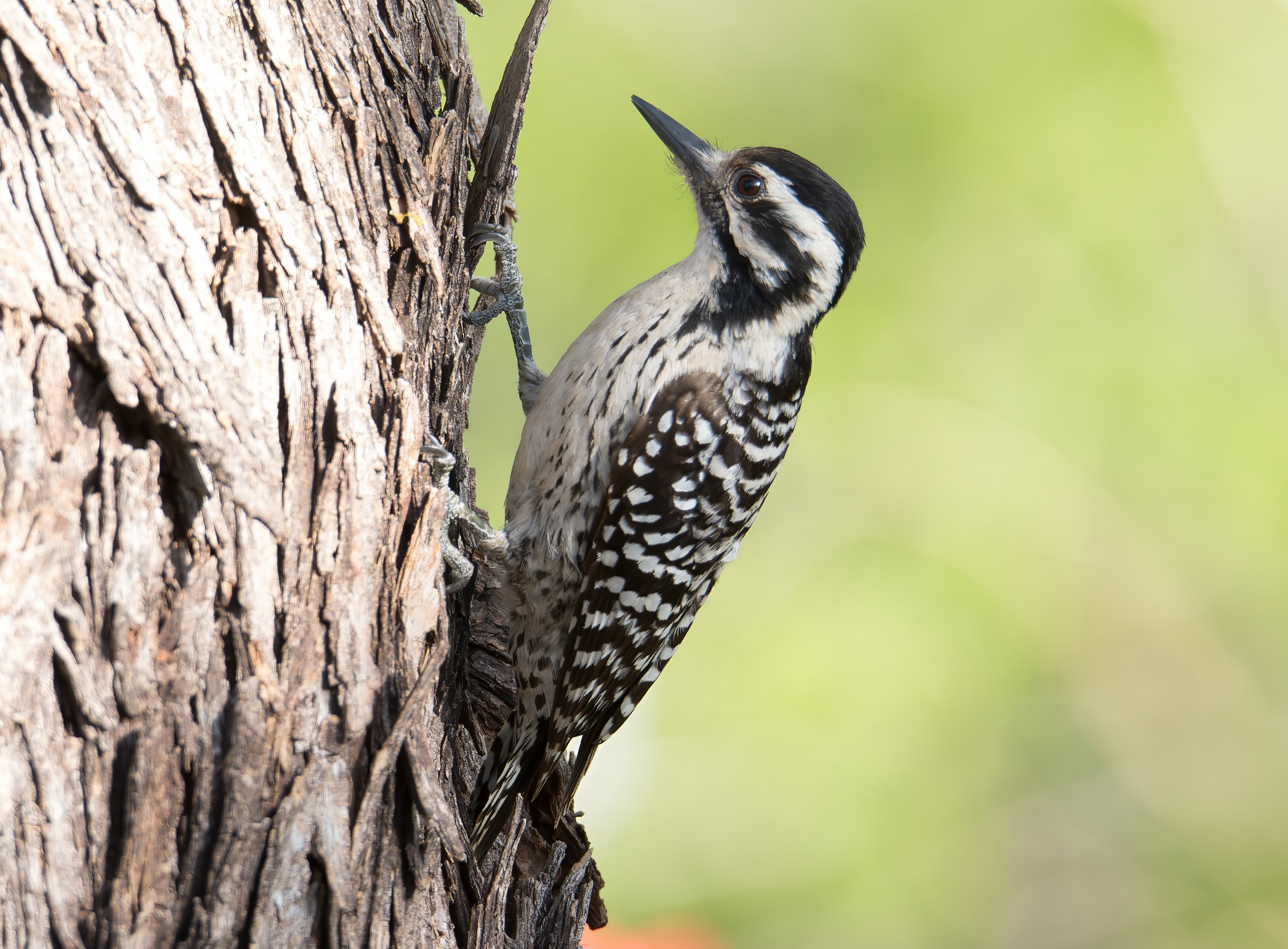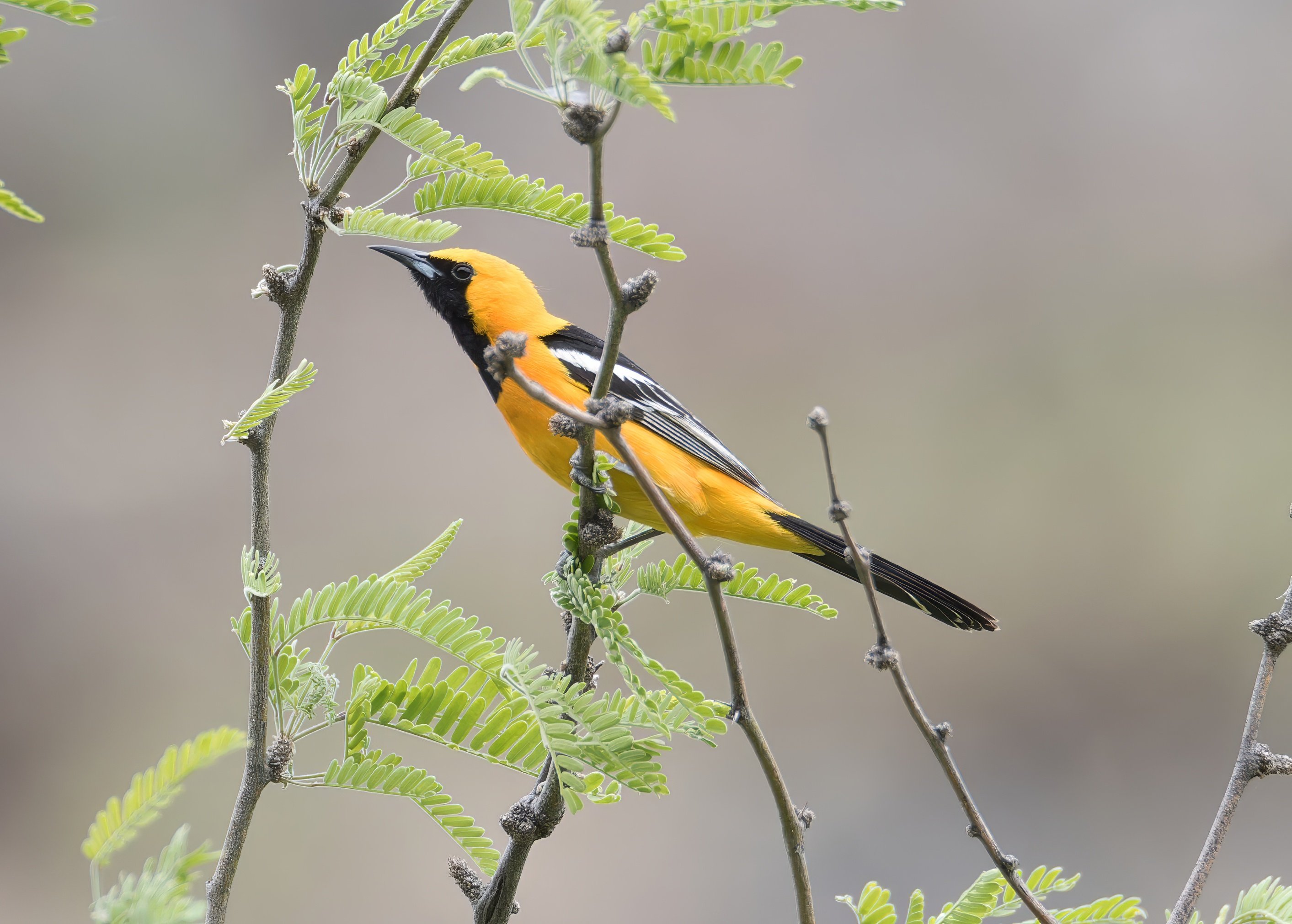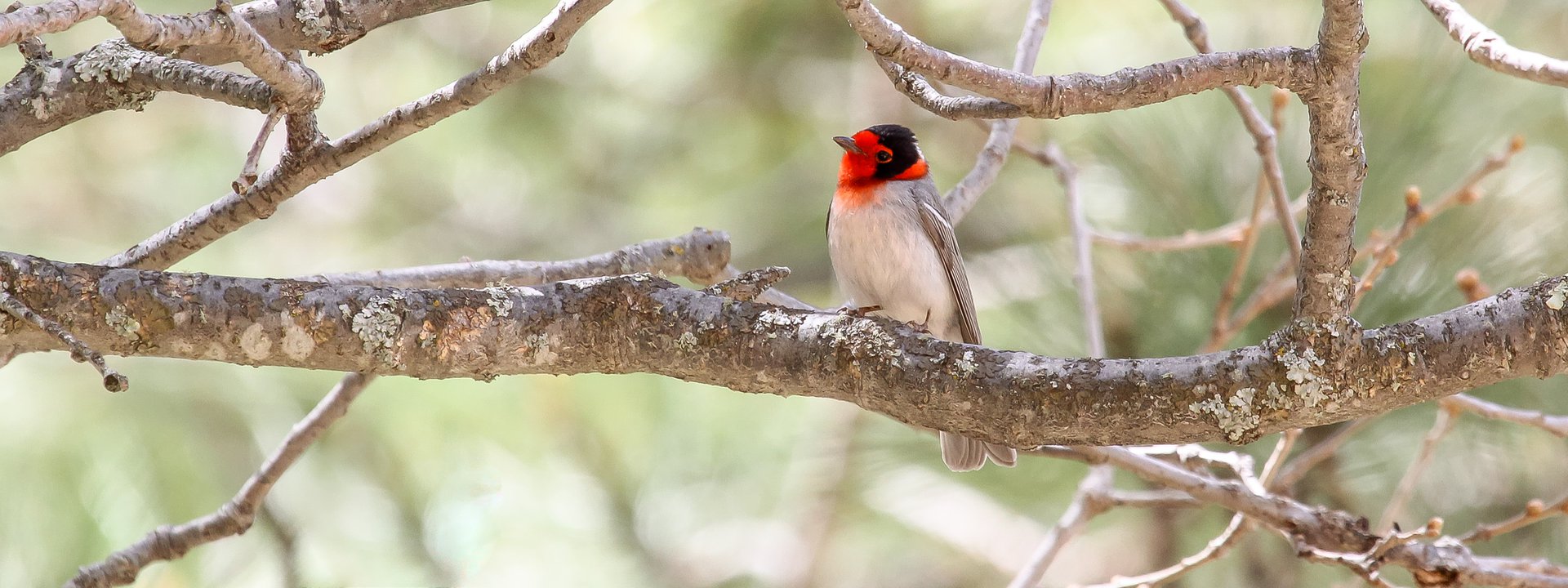USA
ARIZONA | Wild West Birding
A 13-day, small group birdwatching tour to Arizona
Arizona Birding Tours with Limosa Holidays: The beautiful deserts, mountains and forests of southeast Arizona are not only scenically spectacular but also full of amazing birds. Visiting at the very best time of year, our top-rated birdwatching tour to Arizona goes in search of owls, nightjars, hummingbirds and woodpeckers, along with Elegant Trogon, Red-faced and Olive Warblers, Painted Redstart and a long list of other specialities! Led by our resident North America specialist Chris Charlesworth, join our Arizona birding tour for a genuine taste of ‘Wild West’ birding.
Tour Dates & Prices
Fri 26th April 2024
Wed 8th May 2024
- Guaranteed Departure
Tour Cost: 13 Days from £3695 excluding flights
What's Included?
- Limosa Tour Leader
- 11 nights accommodation in Arizona
- All main meals
- Minibus transport
- Sabino Canyon 'tram' ride
- All excursions, entry fees, tour-based tips and taxes
- Checklist of birds for the tour
Cost Excludes
International flights, insurance, ESTA fees, drinks, airport meals/snacks and other items of a personal nature.
Notes
The Land Only Tour Cost is the amount you will pay Limosa.
Despite the end of pandemic restrictions, we have taken the decision to continue to price our holidays as excluding international flights.
To keep the process as simple as possible, we are working very closely with a dedicated agent at Travel Counsellors, Sacha Barbato, who is essentially now our “in house” flight consultant.
Sacha is a highly experienced independent ATOL bonded travel agent, and his contact details are as follows: sacha.barbato@travelcounsellors.com and 01603 360099
He will be able to advise you which flights we are recommending for each holiday and will be able to book these for you.
This will also sometimes give you the option to travel from a regional airport if you prefer.
Please note: for logistical reasons it may occasionally be necessary to reverse the running order of our tour itinerary, travelling out to Portal (rather than Tucson) following the first-night stay in Phoenix but this won't affect the birding or places visited.
Tour Highlights
- Arizona in spring is the prime time for birding in Western North America
- Extraordinary list of special mountain, forest and desert birds
- 2022 tour highlights included Elf Owl, Elegant Trogon, Buff-breasted Flycatcher and Red-faced Warbler
- 7+ species of hummingbird are possible including Costa's, Broad-tailed and Rivoli’s
- Up to a dozen species of owls and nightjars to look for
- Arizona’s breathtaking, beautiful and spectacular scenery
- Tram ride into the magnificent Sabino Canyon
- Small group tour with a maximum of 7 participants
- Expertly led by Limosa’s North America specialist, Chris Charlesworth
Outline Itinerary
Fly to Phoenix. Night Phoenix
Heading to Tucson, we plan to visit Gilbert Water Ranch, Aravaipa Canyon, Agua Caliente and the Santa Catalina Mountains including Sonoran Desert, Bear Canyon & Mount Lemmon. Tucson (2 nights)
Birding at Sabino Canyon and Sonoran Desert Museum en route to Green Valley. Next day, we explore the Santa Rita Mountains and Madera Canyon. Evening 'owl prowl'. Green Valley (2 nights)
Madera Canyon, Santa Cruz River and Amado Wastewater Pond. Reaching Patagonia, we take in Pena Blanca Lake, Patagonia Lake State Park and the Paton’s property for hummingbirds. Patagonia or Nogales (2 nights)
Patagonia, the Sonoita Grasslands and the Huachuca Mountain canyons: Carr, Ramsey and Ash. Evening 'owl prowl'. Sierra Vista (2 nights)
Leaving Sierra Vista for Portal, we enjoy birding at Miller Canyon and the San Pedro River, the Chiricahua Mountains and Portal. Portal (2 nights)
Birding from Portal via Willcox to Phoenix. Fly to UK
Arrival back in the UK
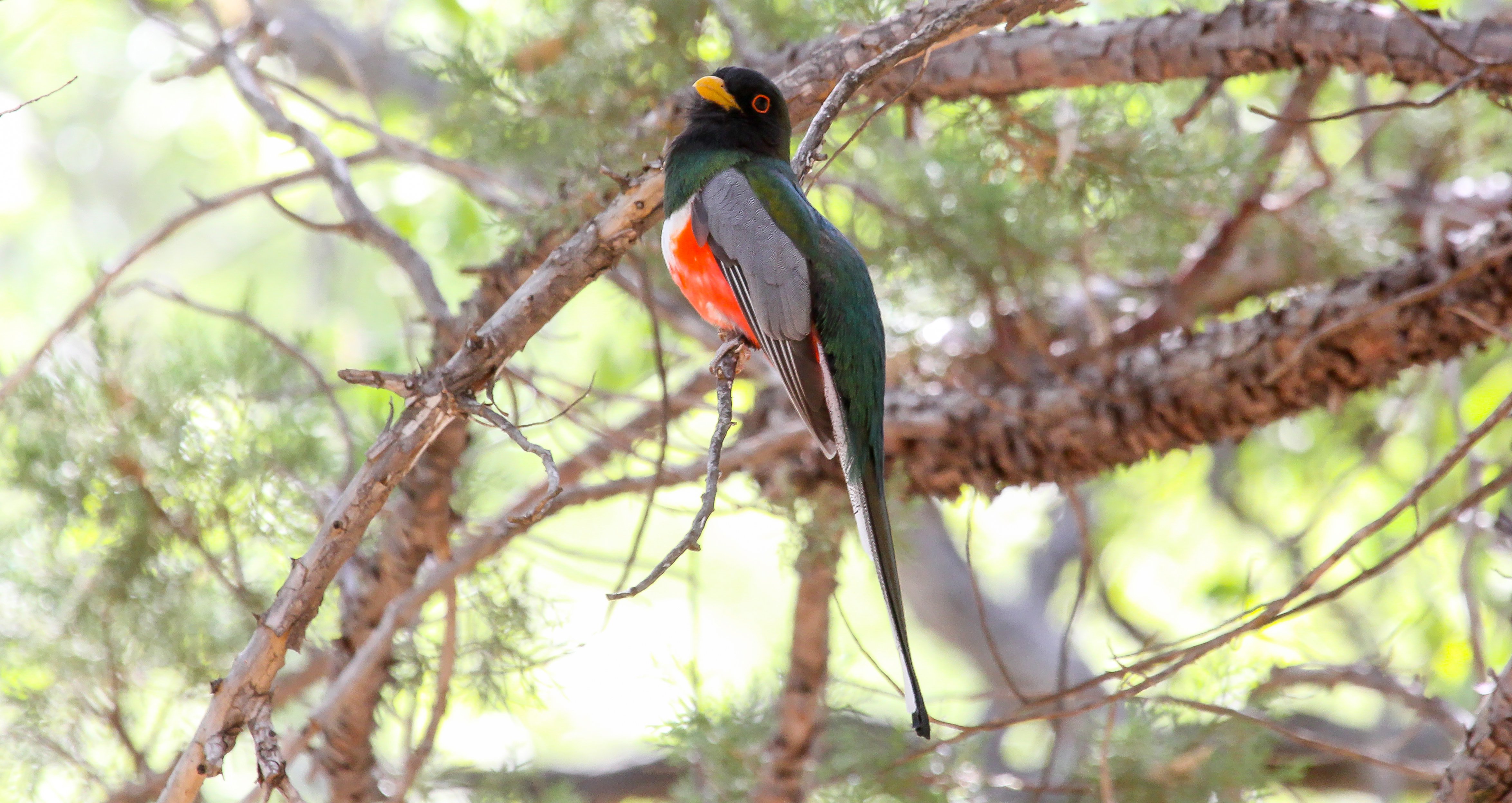
Arizona's wild southeast is a land of contrasts, where forested uplands rise high above the Sonoran Desert plains. Rugged canyons ring the mountain ranges, carrying cool streams to the dry expanses below. This remarkable geographic diversity is reflected in the region’s tremendous wealth of plants and animals, especially its birds.
Indeed, southeast Arizona possesses a greater variety of breeding birds than any other area of comparable size in the United States. Many species occur only here, their ranges barely extending north from Mexico and on this fabulously scenic birdwatching tour we have good chances of seeing most of the specialities!
Late April/early May is the ideal time to visit southeast Arizona, for springtime is invigorating in the mountains and the desert regions have not yet attained the higher temperatures of summer. Birds are at their most conspicuous and the timing of our visit should also enhance the chances of finding any late arriving visitors.
Among many possible highlights, we will seek the fancy but elusive Montezuma Quail, the accipiter-like Grey Hawk, Zone-tailed and Common Black Hawks, Arizona Woodpecker, seven or more species of hummingbird, Elegant Trogon, Thick-billed and Tropical Kingbirds, Bendire’s Thrasher and Yellow-eyed Junco, as well as the gorgeous Red-faced Warbler and Painted Redstart. In spring, the odd Mexican rarity may be about to add a little extra spice to our birding and the likes of Eared Trogon, Aztec Thrush and Rufous-capped Warbler have all occurred at this time!
Remarkably, no fewer than eleven species of owls breed in southeast Arizona and we will venture out after dark to look for at least some of them. Previous groups have been treated to exceptional views of Whiskered Screech Owl, Elf Owl, Spotted Owl and Great Horned Owl. We will also search for Mexican Whip-poor-will and Common Poorwill, although the more numerous Lesser Nighthawks are generally rather easier to spot. Such outings also offer the best chance of seeing mammals with Collared Peccary, Bobcat, Hognose Skunk and White-nosed Coati among species to look for.
Our spring birdwatching tour to Arizona travels in a loop, beginning and ending in Phoenix and with stops along the way to explore the ‘Sky Islands’ of the Chiricahua, Huachuca and Santa Rita mountains, and the Patagonia area. Our improved tour itinerary includes overnight stops in Green Valley and Patagonia (or Nogales) on the Mexican border, allowing easier access to several key sites and less time spent driving.
Our highly rated guide Chris Charlesworth lives in the Canadian Rockies and leads many of Limosa's tours in North America. He devised and has led this Arizona tour for us since 2011 and our 2024 trip will be his fourteenth visit there. Don’t miss the chance to join him and treat yourself to some of the best birding anywhere in Western North America!
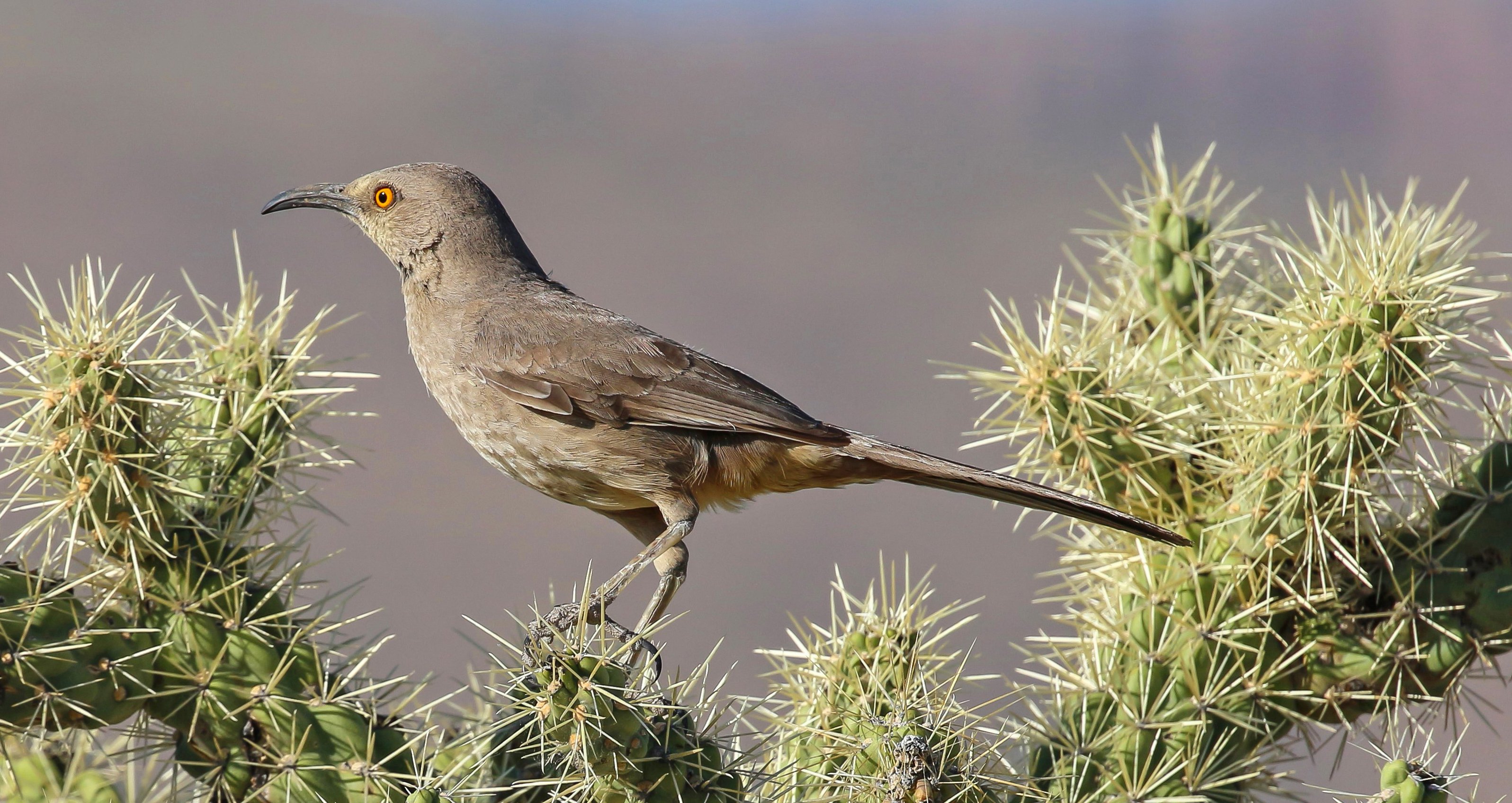
Itinerary note:
For logistical reasons, it may be necessary to reverse the running order of our tour, travelling out to Portal (rather than Tucson) following the first-night stay in Phoenix but this won't affect the birding or places visited on our tour.
Day 1
FLY TO PHOENIX
Our spring birdwatching tour to Arizona begins with a flight to Phoenix (Arizona), where Chris will be waiting to welcome us. Late afternoon arrival and transfer to our nearby hotel, then dinner. Night Phoenix
Day 2
GILBERT WATER RANCH AND ARAVAIPA CANYON
Our first scheduled stop will be at the Gilbert Water Ranch just east of Phoenix, where a series of ponds provide habitat for a range of shorebirds, waders, ducks and cormorants.
Species to expect include Black-necked Stilt and American Avocet, as well as possible lingering migrants. We should enjoy excellent views of Black-crowned Night Herons, Snowy and Great White Egrets, White-faced Ibis, Neotropical Cormorant and various other waterbirds. In the desert scrub surrounding the ponds, Cactus Wren, Curve-billed Thrasher, Verdin and White-winged Dove will hopefully keep us occupied and we could well encounter our first Greater Roadrunner.
We make our way towards Aravaipa Canyon. Raptor enthusiasts will appreciate the selection of birds of prey, with the accipiter-like Grey Hawk, Common Black Hawk, Zone-tailed Hawk and Golden Eagle all possible and the town of Dudleyville is often considered the most reliable site for Mississippi Kite in Arizona. From here we continue south into Tucson for a two-night stay. Night Tucson
Day 3
TUCSON AREA: SONORAN DESERT, BEAR CANYON AND MOUNT LEMMON
From Tucson, we ascend the Catalina Highway which traverses five ‘biogeoclimatic’ zones: from the Sonoran Desert Zone up to the Canadian Zone. The diversity of wildlife along the way is the equivalent of journeying north from Mexico into Canada!
Our first stop, at the Molino Basin Campground, should produce Acorn Woodpecker, Mexican Jay, Bridled Titmouse, Canyon Towhee and the lovely Scott’s Oriole. We will also search through the chaparral (dense, drought resistant scrub) near Molino for two desert specialties: Black-chinned Sparrow and Crissal Thrasher, the latter with its distinctive rusty undertail coverts. As we continue up the Catalina Highway, Agaves (or ‘century plants’) begin to appear amongst the open (partially burned) aspen forest.
At Milepost 10, the Catalina Highway enters Bear Canyon, a cool shady ravine that is simply outstanding for warblers. Grace’s, Olive, Virginia’s, Lucy’s, Red-faced and Hermit Warblers can all be found here, along with the dazzling Painted Redstart. Amongst the tall trees in Bear Canyon, we could find Plumbeous Vireo, Hepatic Tanager and Arizona Woodpecker, North America’s only brown-backed woodpecker.
Once we climb above 2000m, Ponderosa Pines begin to dominate the scene and the avifauna changes again, with Pygmy Nuthatch, Wild Turkey, Mountain Chickadee and Band-tailed Pigeon inhabiting the pine forest. We reach our maximum elevation near Mount Lemmon, where we will be birding at more than 2600m. Birds to watch for in this alpine zone include the difficult to identify Cordilleran Flycatcher, Hermit Thrush, Brown Creeper and Golden-crowned Kinglet.
After an exciting day birding in the mountains, we head back to Tucson for dinner. Night Tucson
Day 4
SABINO CANYON AND SONORAN DESERT MUSEUM
In the early morning we will head for scenic Sabino Canyon, where comical Greater Roadrunners dash after lizards and snazzy Black-throated Sparrows adorn the bushes. We should see Gambel’s Quail with its wonderful drooping topknot, the sleek Phainopepla (easier to see than to say!) and other desert dwellers, all amidst one of the most scenic desert parks in southeast Arizona.
Once in the park, we will hop onto the ‘tram’ and ride up through the canyon. Our driver will give us an informative narration on the area as we head up into the desert.
We will then take a stroll down the road, enjoying desert birds, plants and reptiles before hopping back on the tram for the ride back down again.
After lunch, we have an opportunity to visit to the Sonoran Desert Museum, in Tucson which is a great way to increase one’s knowledge of desert plants and wildlife. Many wild birds can be found here as well, including Costa’s Hummingbird (one of North America’s tiniest birds), the cactus-loving Gila Woodpecker, the plush-capped Verdin and the restless Black-tailed Gnatcatcher.
Leaving Tucson, we then head south to Green Valley for a two-night stay. Night Green Valley
Day 5
SANTA RITA MOUNTAINS: MADERA CANYON
We devote today to exploring one of south-eastern Arizona’s best-known birding locations: Madera Canyon, which lies to the east of Green Valley in the Santa Rita Mountains.
We start with a visit to Florida Wash, at the entrance to Madera Canyon. Searching the desert scrub for birds, we may find Crissal Thrasher, Rufous-winged and Botteri’s Sparrows, and the lovely Varied Bunting.
Continuing onwards, we travel up to Santa Rita Lodge, set at an elevation of some 1600m. New birds could include Zone-tailed Hawk, Arizona Woodpecker, White-winged Dove, White-throated Swift, Dusky-capped and Sulphur-bellied Flycatchers, Plumbeous Vireo, Yellow-eyed Junco and the black and yellow Scott’s Oriole. With luck, we may also come across the rare Montezuma Quail. Around the lodge itself, we may be entertained by the likes of Painted Redstart, Bridled Titmouse and Mexican Jay and perhaps even the very rare Flame-coloured Tanager.
Hummingbirds are abundant, attracted to feeders around the lodge and we should see Blue-throated, Rivoli’s, Broad-billed and Broad-tailed. If we are very fortunate, we could also find the rare White-eared and Violet-crowned Hummingbirds.
As the afternoon wears on, we will decide if we need a siesta or not. Madera Canyon also offers some first rate opportunities for ‘night-birding’ so after the sun sets, we may decide to return to search for such treats as the tiny Elf Owl, Whiskered Screech Owl and Mexican Whip-poor-will. Night Green Valley
Day 6
MADERA CANYON TO NOGALES / PATAGONIA VIA RIO RICO PONDS
After breakfast, we will take another look at the Santa Rita Mountains and Madera Canyon, checking feeders again to see if anything new has arrived. If luck is with us, we might find the much sought-after Elegant Trogon along trails through the tranquil forests of Madrean Oak.
Other inhabitants of this unique woodland habitat include Hermit Thrush, Greater Pewee and Painted Redstart.
For several years, a pair of Rufous-capped Warblers have resided in Florida Canyon, adjacent to Madera Canyon. Although it is never easy to find this duo of Mexican vagrants (the trogon and warbler), we will enjoy a walk here searching for Costa’s Hummingbird, Rock Wren, Cassin’s Kingbird and the lovely Scott’s Oriole and, with luck, hope to find the warbler and trogon.
Heading south towards the Mexican border, we will stop at the Amado Wastewater Treatment Pond. Like a little oasis for the birds in the desert, we could find Spotted Sandpiper, Black-necked Stilt, Ruddy Duck, Lesser Scaup and perhaps something even rarer here.
A stroll along the Santa Cruz River near Tubac is excellent for riparian habitat species such as Grey Hawk, Yellow-breasted Chat, Bridled Titmouse and, in some years (we were lucky in 2019!), nesting Rose-throated Becards. We continue on to our hotel for the next two nights, in Patagonia or at nearby Nogales (depending on availability). Night Patagonia or Nogales
Day 7
PENA BLANCA LAKE, PATAGONIA LAKE STATE PARK AND THE PATAGONIA PICNIC TABLE EFFECT
This morning we will pay a visit to Pena Blanca Lake, west of Nogales. Before things get too hot, we will search for species such as Rufous-crowned Sparrow, a rock-loving member of America’s long list of sparrows. Canyon Towhee is also often encountered here and flycatchers abound with possibilities including Vermilion, Olive-sided, Brown-crested and Ash-throated Flycatchers, Black Phoebe, Western Wood Pewee and Cassin’s Kingbird to name but a few.
After breakfast, we plan to head back east towards Patagonia, stopping at Patagonia Lake State Park. This area is well known as the most reliable location in America for the rare Black-capped Gnatcatcher. We are not guaranteed to see this tiny rarity but if we do we won’t complain! Gnatcatcher or not, birding the park is always worthwhile, with the likes of Vermilion Flycatcher, Summer Tanager, Yellow-breasted Chat and Ladder-backed Woodpecker usually present.
As we continue on, we will pause to visit the Patagonia Roadside Rest Stop which is famous in North American birding circles as the birthplace of the ‘Patagonia picnic table effect’... This happens when somebody finds a rare bird here, and then other birders arrive and find other rare birds at the same location as they search for the initial rarity. We can’t promise the magic will work for us but we will certainly be giving it a try!
Patagonia’s riparian woods are also home to the rare and local Thick-billed Kingbird, as well as Lucy’s Warbler and Bewick’s Wren. Nearby cliffs hold nesting Peregrine and Canyon Wren with its surprisingly Willow Warbler-like song.
In the afternoon, we hope to investigate the Paton family home in Patagonia, where great numbers of hummingbirds are drawn to feeders.
This is the best spot in the USA to look for the rare Violet-crowned Hummingbird, an extremely localised species that has only the merest toehold in North America. As well as 'hummers', we should also see Inca Dove and Thick-billed Kingbird. Night Patagonia or Nogales
Day 8
PATAGONIA AND SONOITA CREEK GRASSLANDS
We return to the Patagonia Roadside Rest Area to take advantage of early morning bird activity.
After breakfast, we drive east towards Sierra Vista, crossing the Sonoita Grasslands where we will look for Botteri’s, Grasshopper, Lark and Rufous-winged Sparrows, as well as Eastern Meadowlark, Loggerhead Shrike and Chihuahuan Raven. If we are fortunate, we may also spot a Pronghorn, an antelope-like creature, which roams the grasslands and is the sole member of its family.
Later, we plan to visit a grassland near Elgin which can be excellent for Scaled Quail and the vast scenery here is breath-taking! Other birds to watch for include Mexican Jay, Lark Bunting, Say’s Phoebe and Horned Lark.
As we make our approach into Sierra Vista, our base for the next two nights, the Huachuca Mountains loom alluringly to the south. This is where we will have our birding adventures over the next couple of days... Night Sierra Vista
Day 9
THE HUACHUCA MOUNTAIN CANYONS
We start our exploration of the canyons and deserts in the Huachuca Mountains near Sierra Vista with a visit to Carr Canyon. As we wind our way up through the cool coniferous forest into the Huachucas, birds to hope for include North America’s tiniest and rarest Empidonax, the Buff-breasted Flycatcher, along with Greater Pewee, Yellow-eyed Junco and a selection of warblers. Woodhouse’s Scrub Jay also inhabits the shrubby Manzanita habitat in upper canyon and in addition to some fantastic birding, this area offers some of the most stunning views in southeast Arizona.
Ramsey Canyon will be our main destination this afternoon. There should be Zone-tailed Hawks in the skies above and in the trees we will look for Grace’s Warblers gleaning insects from the leaves, and rarities such as White-eared Hummingbird or perhaps even a Flame-coloured Tanager. We have also previously enjoyed good views of Elegant Trogon here.
Before returning to our hotel, we plan to visit Ash Canyon where feeders lure dry country ‘hummers’ such as the purple-throated Costa’s and the gaudy male Anna’s, however, the star attraction to hope for is the rare Lucifer Hummingbird, another species restricted to only a handful of sites in the southernmost deserts of North America. Night Sierra Vista
Day 10
MILLER CANYON AND SAN PEDRO RIVER
This morning, we plan to visit Beatty’s Guest Ranch in Miller Canyon. This delightful place is fantastic for hummingbirds and we will watch the busy feeders, enthralled as a procession of species including Blue-throated, Rivoli’s, Broad-billed, Broad-tailed, Anna’s, Black-chinned and perhaps a White-eared keeps us entertained.
A walk into Miller Canyon, where the oak forest follows a trickling creek, is superb. This strand of trees is home to a pair of ‘Mexican’ Spotted Owls, which can sometimes be found roosting in their favourite trees. If the owl doesn’t entice you, then there are Red-faced Warblers, Painted Redstarts, Sulphur-bellied Flycatchers and Hepatic Tanagers to watch for and on previous trips, our groups have also encountered a range of interesting butterflies and reptiles.
Just east of Sierra Vista, the San Pedro River slices through the desert. The riparian forests alongside the river are home to an excellent variety of species. Birds are especially abundant around San Pedro House, where we could find the delightful Lucy’s Warbler, Cassin’s Kingbird and Bullock’s Oriole. We will follow the trail beside the river, watching the shore for Snowy Egrets and checking the overhanging branches for Green Kingfishers and Tropical Kingbirds. In May, Summer Tanagers and Yellow-breasted Chats sing their loud and conspicuous songs from the cottonwoods along the banks of the river.
Leaving San Pedro, we then make the drive into the Chiricahua Mountains and the tiny hamlet of Portal, which will be our base for the next two nights. Night Portal
Day 11
CHIRICAHUA MOUNTAINS INCLUDING PORTAL
We shall be up before breakfast to explore an area of desert near Portal which is often excellent for Black-chinned Sparrow and Juniper Titmouse.
After breakfast, we begin our ascent of the Chiricahua Mountains, making our way up to Rustler Peak at over 2600m. Specialities to look for include the curious Olive Warbler and the rare and local Mexican Chickadee. With a little luck, we will also find the beautiful Abert’s Tassel-eared Squirrel.
On our way back to Portal, we plan to visit the South Fork of Cave Creek Canyon. This spot is perhaps the best place in the USA to find Elegant Trogon and, with luck, we may hear this colourful and rare bird giving its barking call from within the towering sycamore trees lining the trickling Cave Creek. Many other birds are possible here including Mexican Jay, White-throated Swift and Bridled Titmouse.
We will also want to explore the tiny hamlet of Portal itself. During the day, many birds are attracted to feeders lining the single street of this real life ‘one horse town’. We will hope to find Harris’s Hawk, along with Crissal and Bendire’s Thrashers, Burrowing Owl and Black-tailed Gnatcatcher, while yet more hummingbird feeders offer further opportunities to look for the lovely Violet-crowned Hummingbird, a very rare resident in Arizona.
After dinner, we have an opportunity to look around town for night birds with the possibilities including Lesser Nighthawk and Western Screech Owl, as well as Elf Owl and Great Horned Owl; two species at opposite ends of the scale in terms of size! Night Portal
Day 12
CAVE CREEK AND WILLCOX SEWAGE PONDS, DEPART PHOENIX
Leaving Portal, we make a brief journey back to the South Fork of Cave Creek for one last visit before heading north and east, back towards Phoenix.
Of course, no self-respecting bird tour would be complete without a visit to at least one ‘waste water treatment works’ and along the way, we plan to call in at Willcox Sewage Ponds where various ducks and shorebirds are possible.
Our travels come full circle with our arrival back in Phoenix where we bid farewell to Chris and check-in for our evening departure back to the UK.
Day 13
ARRIVAL IN UK
Afternoon arrival in the UK, where our spring birding tour to Arizona concludes.
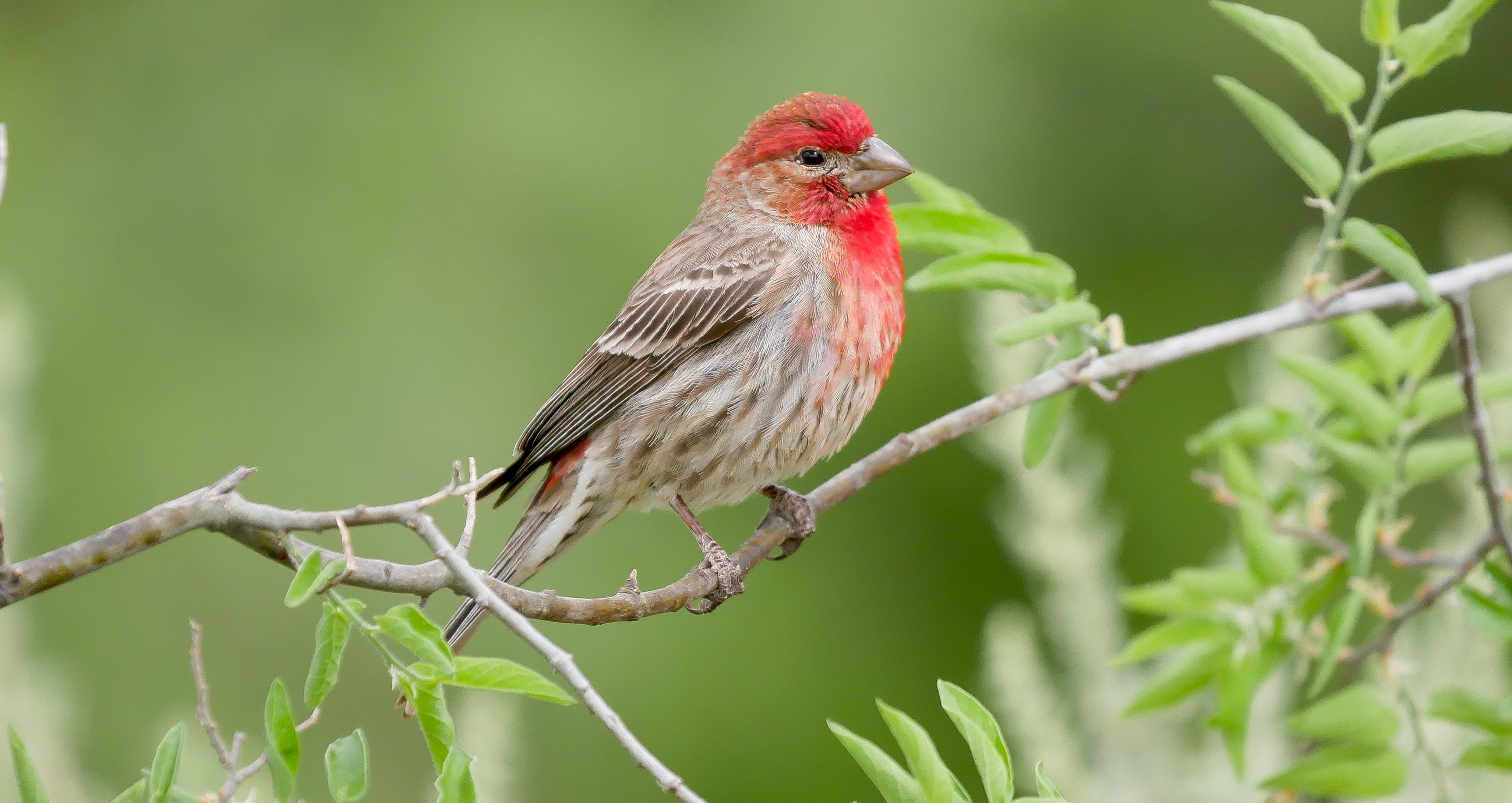
WHAT TO EXPECT
A 13-day birdwatching tour to Arizona focusing on the wild southeast,where the beautiful deserts, mountains and forests are not only scenically spectacular but also full of amazing birds. Our holiday is scheduled at the very best time of year for birding in this region, our trip goes in search of owls, nightjars, hummingbirds and woodpeckers, along with Elegant Trogon, Red-faced and Olive Warblers, Painted Redstart and a long list of other specialities!
Be prepared for early starts to take advantage of the cooler morning temperatures, although we will usually have a break (except on travel days) to rest up during the midday lull in bird activity.
We will offer one or two evening / nocturnal birding excursions to look for owls and nightjars which are, of course, entirely optional.
Please note for logistical reasons it may occasionally be necessary to reverse the running order of our tour itinerary, travelling out to Portal (rather than Tucson) following the first-night stay in Phoenix but this won't affect the birding or places visited.
April and May are two of the driest and sunniest months of the year at Phoenix, with scarcely any rainfall occurring during this period. Humidity is low. It can, however, be chilly to cold in the desert overnight and first thing but daytime temperatures soon start to climb and it is likely to be mostly warm-hot with daily temperatures ranging from around 10-32C (50-90F). It is generally cooler at altitude and it can be chilly to cold first thing in the morning in the mountains.
Biting insects should not be a problem on this tour but there are the usual desert hazards to watch for, especially cactus and other prickly plants!
BIRDS
175-200 species
MAMMALS
5-15 species
ACCOMMODATION
11 nights accommodation in Arizona, in comfortable US-style hotels of good North American standard.
Lodgings in the tiny hamlet of Portal are more rustic, in comfortable southwestern-style cabins around a wooden deck and with great birding right outside!
All rooms have private facilities.
MEALS
All main meals are included in the tour price, commencing with dinner on arrival in Phoenix on Day 1 and concluding with lunch prior to departure from Arizona on Day 12.
Food is good, varied and plentiful. Breakfasts are usually buffet-style at the hotels. Lunches will usually be picnics though we sometimes visit a local restaurant or diner. As is the norm in the USA, evening meals will often be taken at a local restaurant since many North American hotels lack in-house restaurant facilities.
Our tour price also includes the expected 15-20% gratuity for all meals in North America.
WALKING
Walks are short and mostly easy, although moderate at times in the mountains.
Walks at both Madera Canyon and Miller Canyon (each about a mile) involve quite a bit of uphill walking but all taken at a slow pace with the option to wait and watch excellent birdfeeders for anyone who chooses not to participate.
It will be hot in the desert but we start early and our air-conditioned vehicle will always be close at hand.
Trails can be rocky and uneven and vegetation spiny, so sturdy footwear is required. Wear comfortable waterproof walking shoes with stout corrugated soles for grip.
Maximum elevation on this tour: We reach a height of c.2,800m in the Santa Catalina Mountains.
TRAVEL
Despite the end of many pandemic restrictions, it is still proving extremely difficult to predict future flight prices and schedules. As a result, we have taken the decision to continue to price our holidays as excluding international flights.
To keep the process as simple as possible, we are working very closely with a dedicated agent at Travel Counsellors, Sacha Barbato, who is essentially now our “in house” flight consultant.
Sacha will be able to advise you which flights we are recommending for each holiday, and he will be able to book these for you.
This will also sometimes give you the option to travel from a regional airport if you prefer.
GROUND TRANSPORT
By air-conditioned minibus.
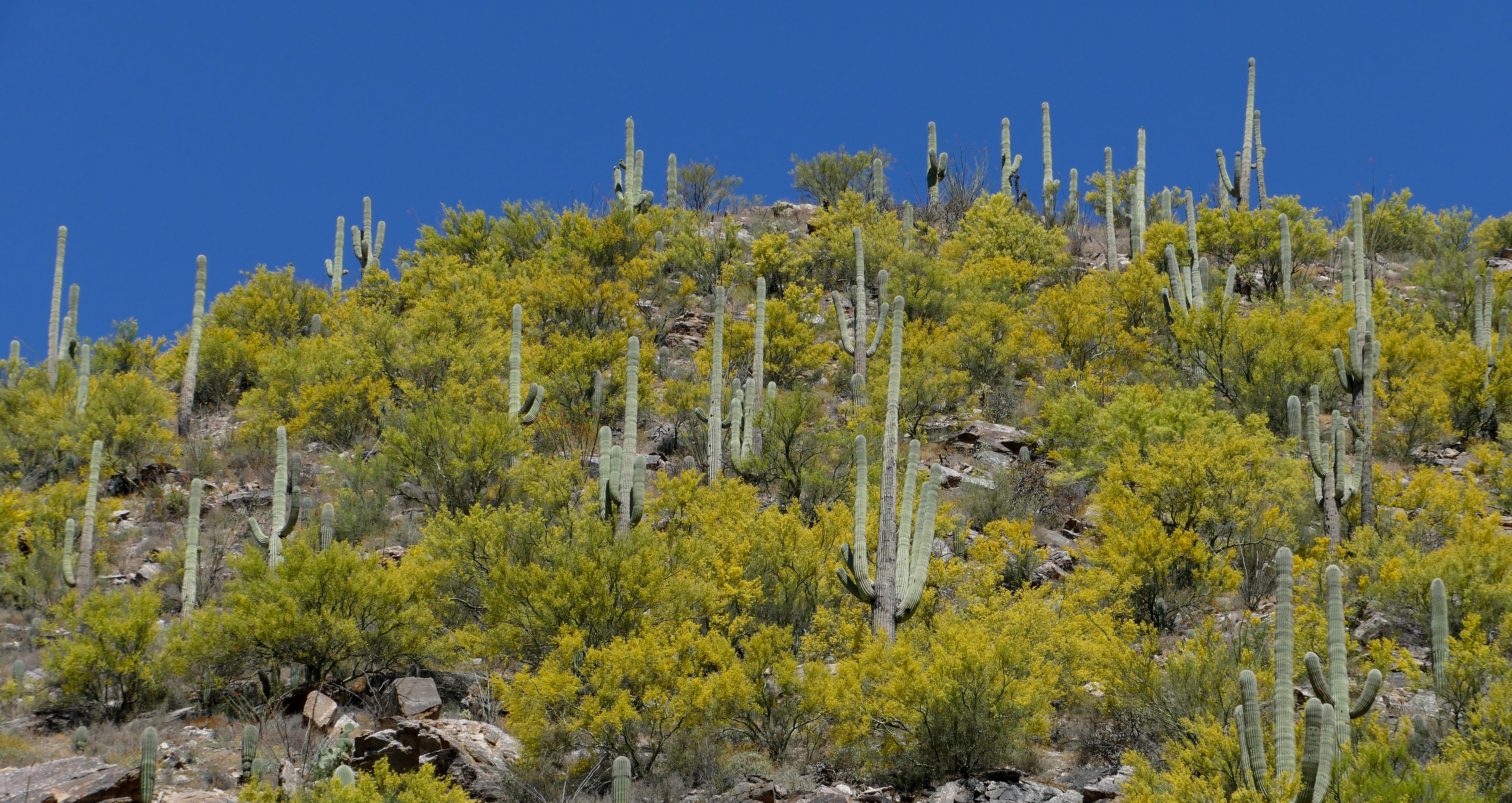
Tour Gallery
View a gallery of images for this tour below, click on an image to view as full size with caption
